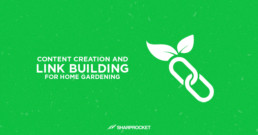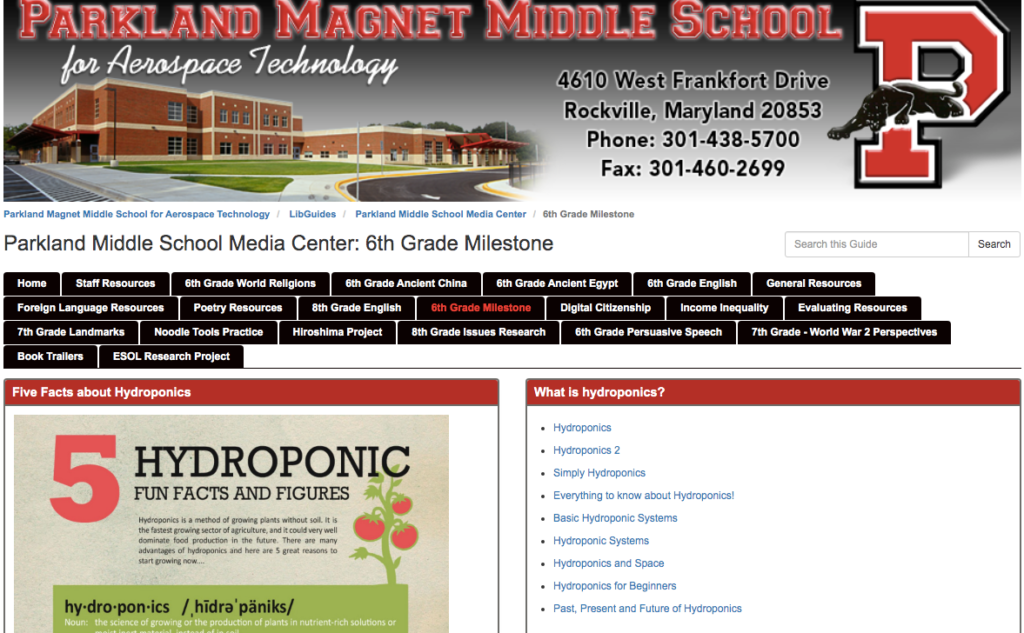Content Creation and Link Building For Home Gardening Websites
Starting your own home gardening website is never easy. You look for topic ideas that your readers want to consume, grow your blog, and turn it into something of value — a coaching business, an affiliate, or a community for gardeners.
Traffic acquisition requires effort and a full of other resources to make it a reality. This includes putting enough content that engages your audience and that attracts enough links for your page/site to rank for your target keywords.
Content marketing provides an opportunity for your brand to interact with your audience. When I say your brand - it is you regardless of your team size. Whether you are just starting this home gardening website as a hobby or you have a large content team, consider it as your brand.
Today, let's talk about how to create content that gets organic (natural) links for your home gardening website.
Table of Contents
Content Guides For Targeted Audiences
Resource guides are not uncommon today. You'll find them everywhere.
However, publishing guides for content quantity sake is never enough. You need to understand your audience and how they want to be served by your expertise.
Level of Audience
For example, Green and Vibrant exemplify great content writing because of their beginner guides about hydroponic gardening.
Beginners guides
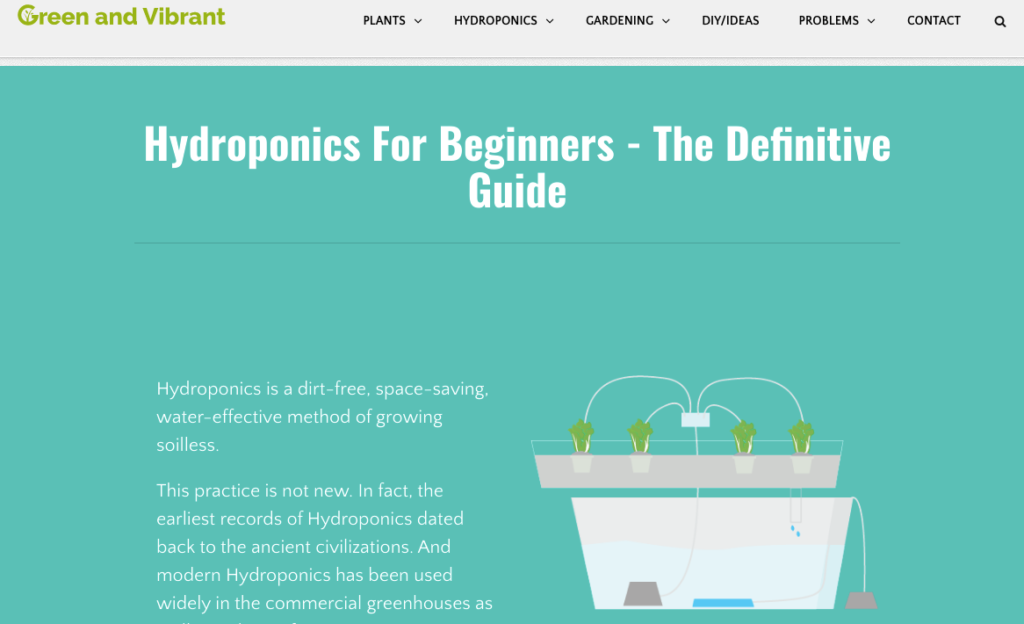
They even have Do It Yourself and complete guides for newly like-minded communities.
Essentially, the level of audience should be considered in crafting your content piece. You want your blog to cater to as many audiences as possible. In most cases, industry starters or early adopters are ones that dominate the majority of the search market.
DIY guides
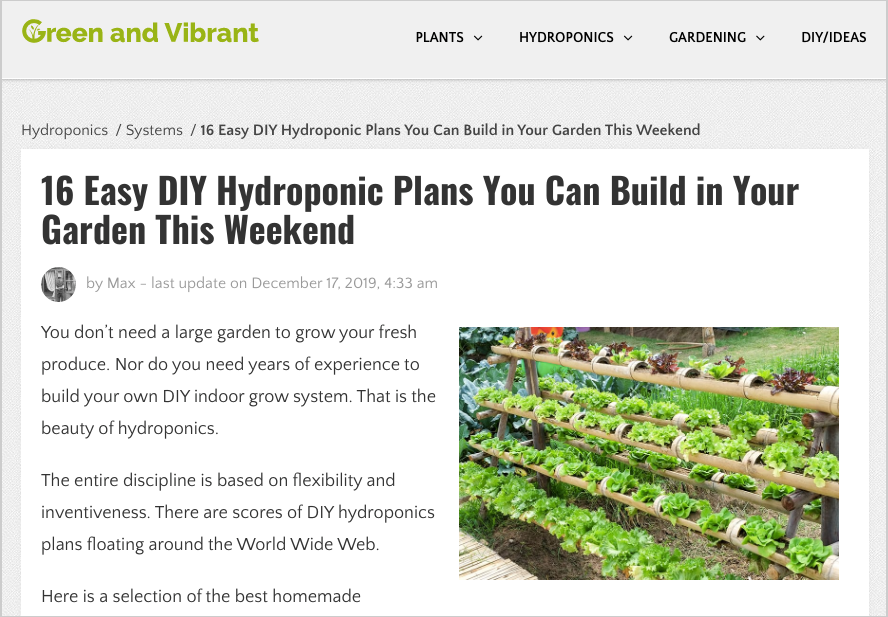
Complete guides
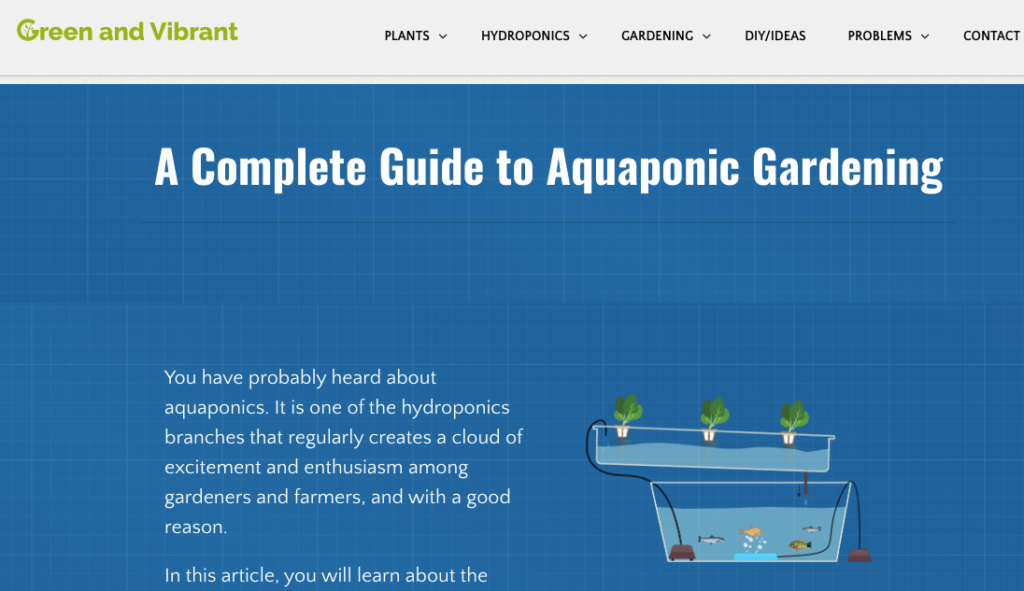
It is a note to consider tapping into topics that people are likely to be interested in. For example, hydrophonic plans and aquaponic gardening may be unfamiliar terms for most people, but valuable topics for those who want to dive into home gardening.
Content Type - "How to Grow and Care Plants"
Gardening is about growing your plants. It involves processes and procedures which your readers would likely want to follow as they pursue their hobby.
You can start creating content about methods in growing, caring, and setting up plants (e.g. how to grow and care air plants).
Methods to grow plants
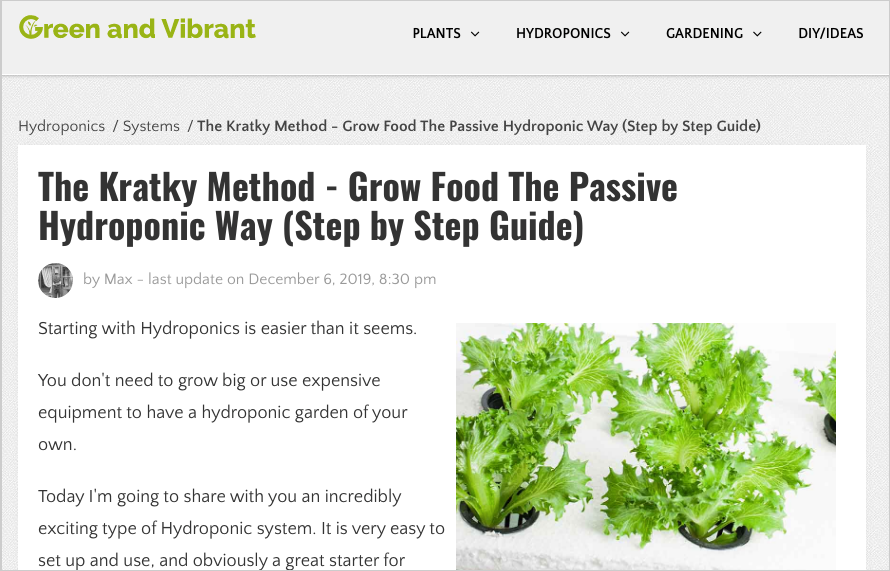
Plants (Daises)
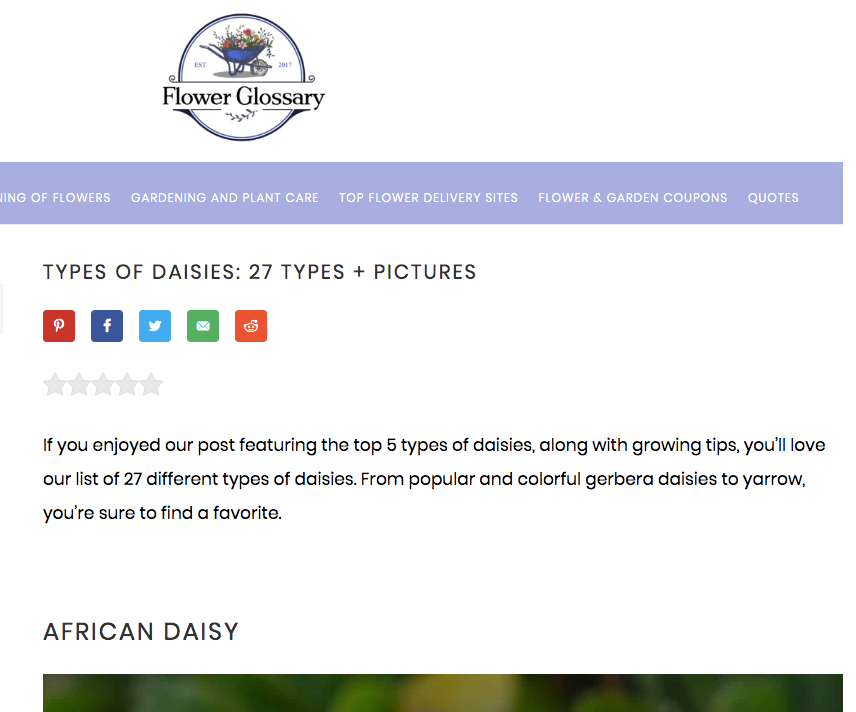
Setting Up Plants
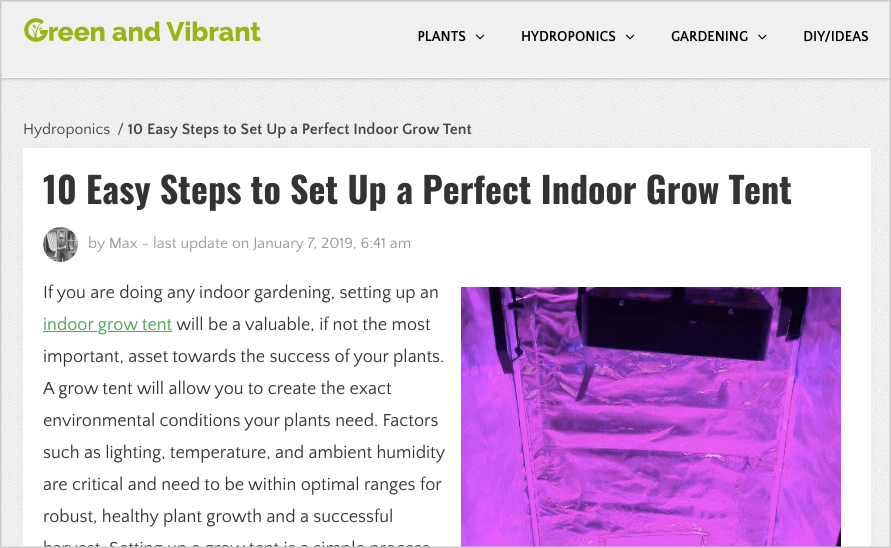
You can go step further by providing information and articles on types of plants and flowers. For example, you can have articles on the types of roses and types of daisies.
Content Depth - "Planting Systems"
Home gardening is a broad industry. That's the reason there are content creators who enter the scene that dive deep into a specific niche.
Consider Home Hydro Systems. It is a non-elegant website with basic design. But what makes it stand out and rank for multiple niche keywords is the idea of topic focus. It only covers everything about home hydro systems.
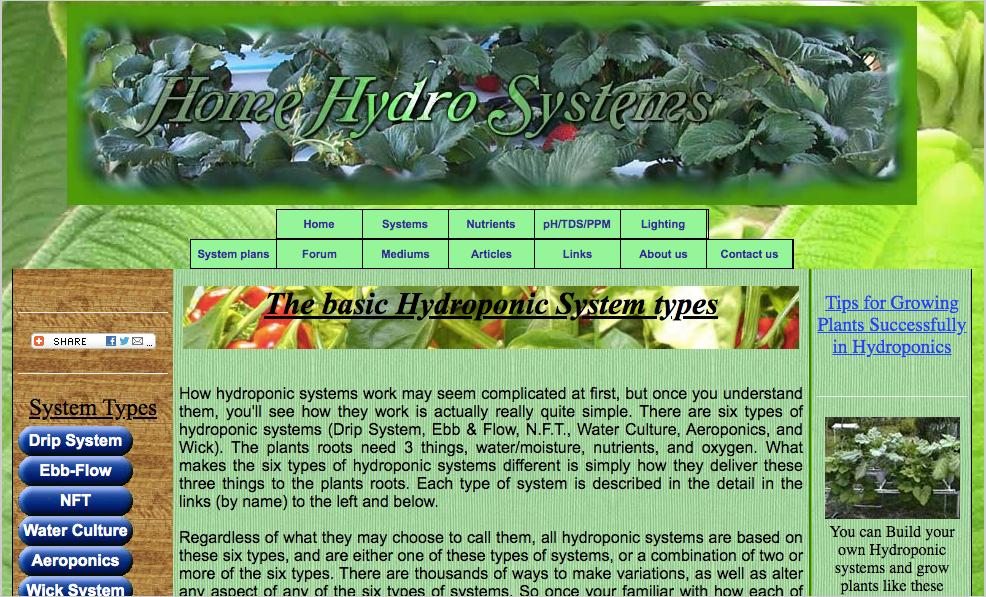
If you haven't started creating your home gardening site, you can think of one particular topic area where you'll massively invest efforts and resources. Look into your expertise and available assets to use for content creation and content promotion.
Content Topic - "At Home" Keywords
Keyword and topic research is essential to any content creation initiatives. Looking into what topics that make pages rank and increase organic traffic to the site helps better structure the content.
During this content ideation process (blog post ideas), you can use the "at home" trick to find any gardening keyphrases. Particularly in this season where most people are staying at home, topics about what to do "at home" are in demand.
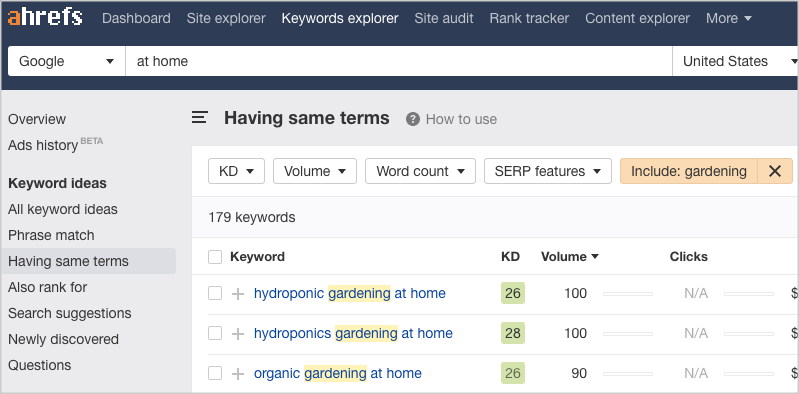
Note: You can use this same strategy for other industries if you're working with clients or have multiple websites - may it be bands and musicians, music eCommerce, plumbing, personal training, moving, car rental companies, hotels, and dentists.
Promotion of "Home Gardening" Content
When promoting your content pieces, it is important to know the best places that will amplify the reach of your web assets.
That includes finding what types of linking pages that have a history of linking to a certain type and format of content in your industry. In home gardening niche, I've found many curators of resource pages actively linking to educational types of web assets. Here are some examples.
DIY Resource Pages
Do you have "do it yourself" guides?
Start finding DIY resource pages you can reach out to for content promotion. Use targeted queries such as inurl:links OR inurl:resources "DIY" to discover those pages.
High school and College Links Pages
Highschool websites have dedicated pages for science-related guides that perfectly fit for home gardening content.
These are quick wins in link building as you don't have to force them to link to your page. All you need to do is to check if the page has a linking history to any similar content assets.
You may simply show your content piece and let the curator decides if it's worth linking from the links page.
Forum Links Opportunities
You can't get away from forum links.
If you can participate in niche relevant discussion threads, you can develop momentum for link acquisition.
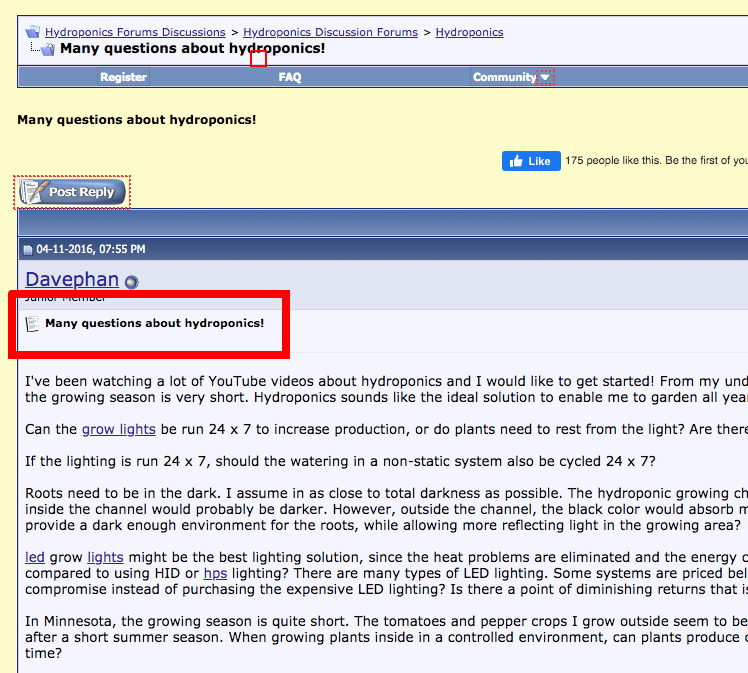
To start with, go through forum threads and participate in discussions where you can contribute your expertise in.
If your existing content assets may be a good addition to your answers as helpful references, add links to appropriate pages. Don't spam forums with your links. Rather, assess if a link to your resource asset is good for sharing.
Take Good Care of Your Home Gardening Website
Deliver content that matches your expertise and to your audiences' needs. Always have a caring mindset of who you are reaching out to — whether you're working in your content creation or content promotion process.
Like growing a plant, your website needs to be taken care of by putting high-value content assets and promoting them massively to appropriate places.
Content Production For Links
What is content production?
Content production is the art of understanding and defining the right audience and of discovering ways where to put content pieces on a website, in such a way it is visible to the users.
Content production is both a science and an art. It deals with systems that help scale the production of content assets - whether visual or written, such as videos, blog posts, or whitepapers.
A proper workflow of activities streamlines the process and makes it more possible to develop higher-quality content assets on a consistent basis.
There are no guidelines or a proper framework for content production. As much as people are trying to box things, it wouldn't be possible given the diversity of audiences, industry market, and the way things are changing constantly.
In this post, we'll dig into some non-conventional ways to produce content assets in your industry.
Table of Contents
INVERTED BROKEN LINK BUILDING IN CONTENT PRODUCTION
There are a plethora of online assets on any subject and if you'll take a look at your industry, you would find hundreds of blog posts on your chosen topic.
If you're starting and you want to produce content that gets links, you can start by reverse engineering other assets that have done well in the past in terms of link acquisition.
While this sounds to be the skyscraper technique, but you may do an alternate approach of focusing on dead pages that acquired links in the past.
Look for pages that have been brought down by the creator but previously gained link traction.
If you're doing link prospecting for resource pages, you can start running through the page with LinkMiner to find any dead pages with a substantial number of referring domains.
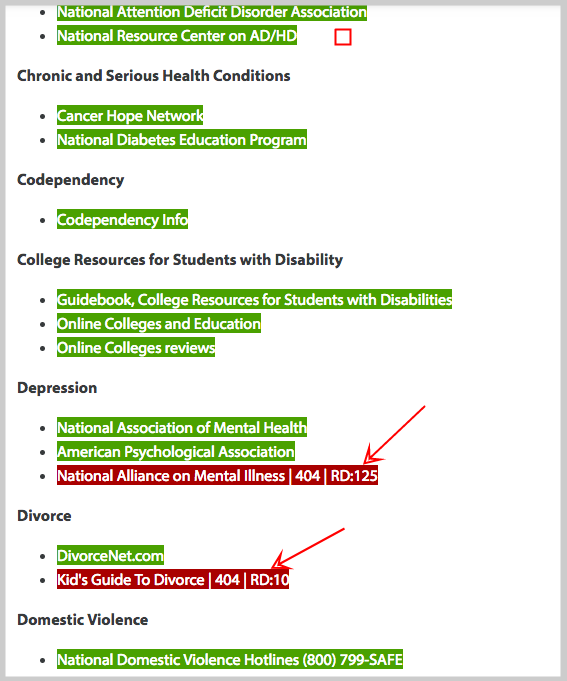

Check the live version of the page using archive.org and assess if it's relevant to your content strategy.
This exact process may be time-consuming and isn't scalable as it is uncommon to find highly linkable dead links on any resource page.
With that, you can use Ahrefs' Content Explorer to simplify the process. Ahrefs recently added features that allow content creators to find dead pages on topics.
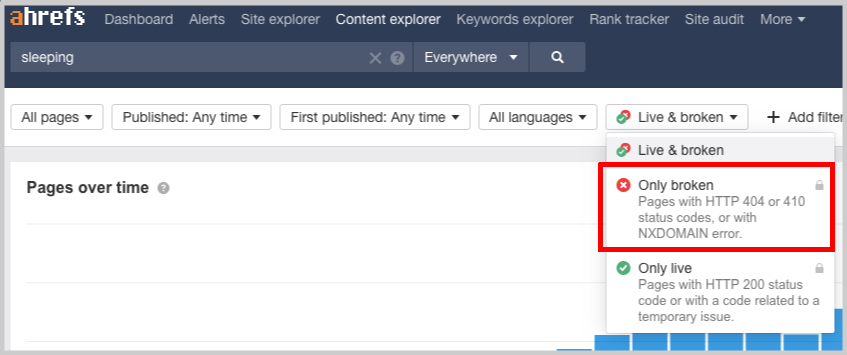

Input the industry keywords and choose only broken in the Live & broken dropdown menu filter. Go through the search results and sort it by referring domains.
Assess which ones are fitting to your brand. Develop the content asset, link to the original source for data and information if needs to be. Reach out to people who have linked to the original source and to linkers of similar content assets.
FINDING RECENTLY PUBLISHED CONTENT TO REPLICATE
If a blog post (or any page) has been recently updated, there seems to be a reason behind it--either it was just updated to adapt to the current year's information or it was perceived to be valuable enough. Getting organic links and social shares over time could help content perform better and attract more links if updated.
You can use the approach of looking for re-published content. And not just republished, but is perceived to be so valuable enough to reformat and update again.
Ahrefs' new feature of published and republished dates makes this process practical. Search for any keywords in your industry and use filters of published and first published date filters. A concrete example is to find pages that have been first published from 2000 to 2010, and have been published from 2018 to 2019.
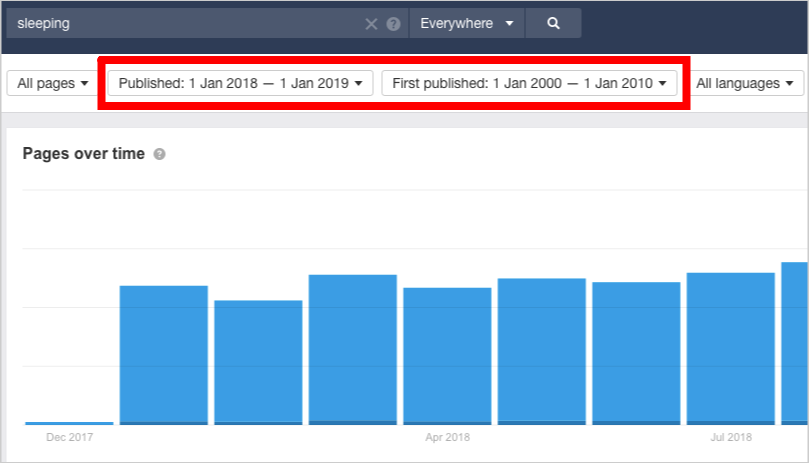

Add referring domains as your filter and make it to a minimum of 100 referring domains.
Go through each title of the page and click on ones that make sense to your business. Get inspiration for your site's content ideas.
CONTENT PARTNERSHIP THROUGH DISCOVERY OF AUTHORS
In the field of link building, there is more to consider than just the process and systems. While most SEOs are fond of pushing scalable processes, there is one thing people shouldn't neglect after all - that is relationships.
Partnering with any publishers for content production is one good way to produce higher-quality articles as two or more authors can validate the information and texts on the page.
You can do simple Google searches to find authors in your industry. Dig a little deeper and search for websites they've contributed works to. 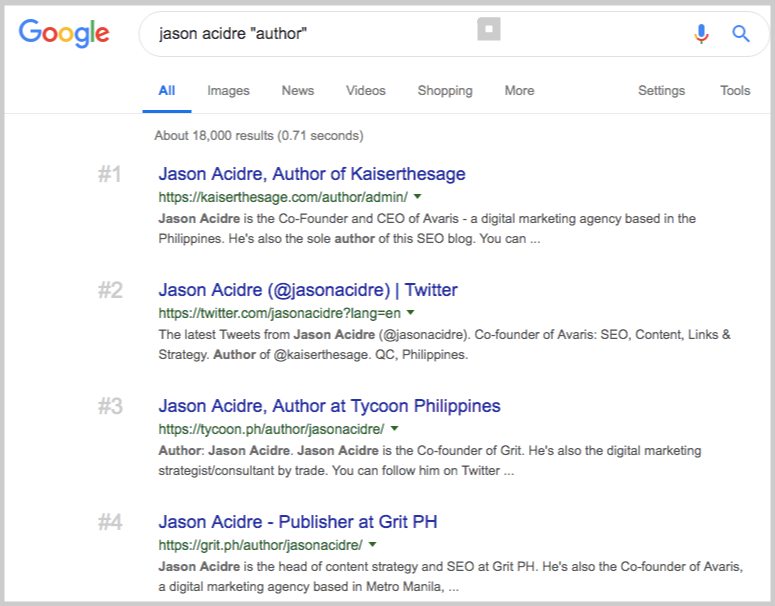

With Ahrefs, you can already see all other content written by the author using the tools' 1-click filtering. You may find more websites and blogs that may not be industry-specific, but are audience targeted and still relevant to your potential customers.


There are a lot of benefits one can derive from discovering industry authors and websites. Here are some of them:
- Allows you to find industry blogs and publishing sites where you can pitch for "guest posts".
- Helps determine the niches and sub-niches these authors are focusing on and where could these intersect with your brand.
- Discovers tangential markets your content production team can tap onto to expand your markets in audience targeting.
- Can be a way to collaborate with other content authors for huge web assets - it may be daunting at first to reach out, but if you also have substantial followers, there's a higher likelihood of success for mutual collaboration.
Here are more useful resources on content creation and recreation:
- LinkBaiting: Creating Content That Attracts Links
- Creating and Developing Content Assets Like A Pro
- The 38 Most Creative Ideas I've Ever Seen
CONTENT PRODUCTION FOR LINKS
At times, you don't have to always reinvent the wheel. There are content producers in your industry who have done so well in crafting and promoting content assets that get links organically. Get content inspiration from these linkable assets and you can even reproduce a few highly linkable content for your site.
If you're in need of outsourcing link building projects, you can check out our services page or directly contact our team for a consultation.
How to Become a Content Creator
What is a content creator?
A content creator produces material for a target audience that serves both a user purpose — entertainment or educational, and a content marketing purpose — generating brand awareness, product/service purchase or brand loyalty. The content he or she produces takes many forms including blog posts, videos, visuals, and audio.
Content marketing has grown its importance over the past couple of years in the entire digital marketing field.
Its proven efficiency in improving thought leadership for brands as well as demonstrating expertise for online personalities has been more of a need than a want today.
There are increased demands for content creators to deliver various types of content for online audiences — bringing more jobs to more people. The above quality of work like in any industry lures more pay and career opportunities.
This leads us to the question, "how to become a successful content creator?".
A little disclaimer here: the tips that I'll be sharing below are driven from my experience and from the experiences of content creators I've been following online and have mentored me in this area of content marketing — content creation.
Before we answer the question "how to become a successful content creator?", let us first define what a content creator is.
Table of Contents
How to Become a Successful Content Creator?
There is no one surefire formula for achieving success as a content creator. You can't box content creation with limited ideas. However, there are certain principles and habits you can employ and adapt to your context in order to achieve the results you want for your content.
Let's start.
1. Get updated about the industry
Whether you are creating content for your own blog or for a brand you're employed with, reading the latest industry updates gives you an advantage.
By knowing what is currently happening in your industry, you can take things right into perspective, which helps in putting more insights into your content piece.
With stored knowledge, you can provide a different angle about the topic you're publishing — a twist that kills boredom for your readers.
Getting updated with industry news allows you to see new brands and new personalities you can also collaborate with for future content creation initiatives.
One way to put this into a habit is to use a tool to save articles for later reading or use. Rather than trying to squeeze time for reading when you're focused on a big task, why not use a tool to save articles you just stumbled upon. This saves you a couple of wasted unfocused hours.
You can use Pocket to save articles and pages you want later for viewing.
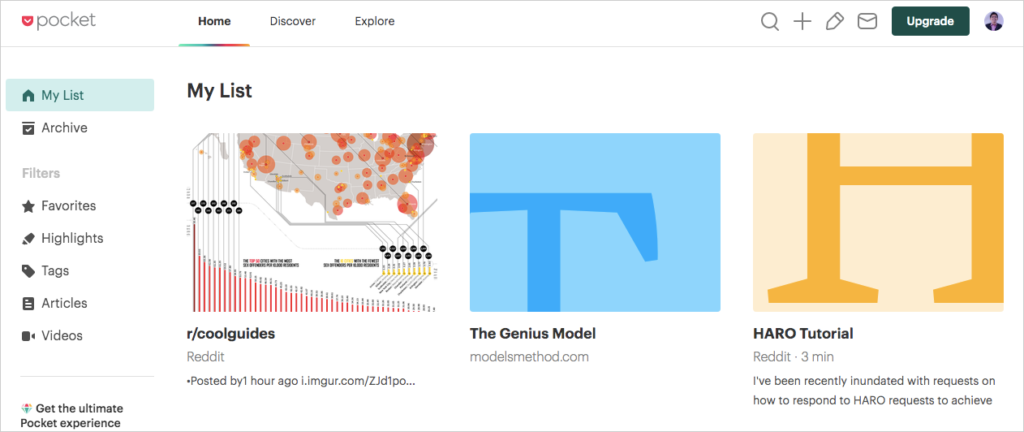

When finding activities to become productive, you can check your Pocket over the phone. Without too much time consuming, you get things done as a content creator.
2. Produce content regularly
Whether your piece is a video, audio (e.g. podcast), or text-based (article), be consistent in your production.
The way to achieve better quality in your output is to produce more content.
By consistent content production, you see points of improvement as you assess each one of them after the production (even during its distribution or promotion phases). You see how to make it better through the feedback of your consumers — readers or followers.
Quality control is essential in content creation and can be done more effectively if there is a good number of content pieces produced daily. Always strive for more content assets without sacrificing quality.
As a content creator, there are times when you feel like you can't publish any more pieces. That's when you need the inspiration to push you through.
Here are some materials that can inspire you to produce content pieces regularly:
Sidenote: During the Coronavirus, here are some good reads to help you with your content strategy: SiegeMedia's content strategy during coronavirus, and Moz' content ideas guide for every niche (what readers want during Covid-19).
Further Resources:
- Content Marketing Ideas & Strategies For Small Business
- Creating and Developing Content Assets Like A Pro
- 5 Linkable Assets Examples
- LinkBaiting: Creating Content That Attracts Links
3. Curate content
Content anxiety is common to content creators. It happens due to the pressure of putting out too much content to fulfill the editorial calendars of blogs. To overcome this type of anxiety means that you follow your content schedules without sacrificing the quality of output.
One way to fight against content anxiety is through content curation.
Content curation is the process of organizing and presenting outside content in a new, meaningful way.
Essentially, you are banking on other people's published content. Organize them to provide easy references and easy consumption to your readers.
You can start content curation by following brands and thought leaders in your industry with solid content assets.
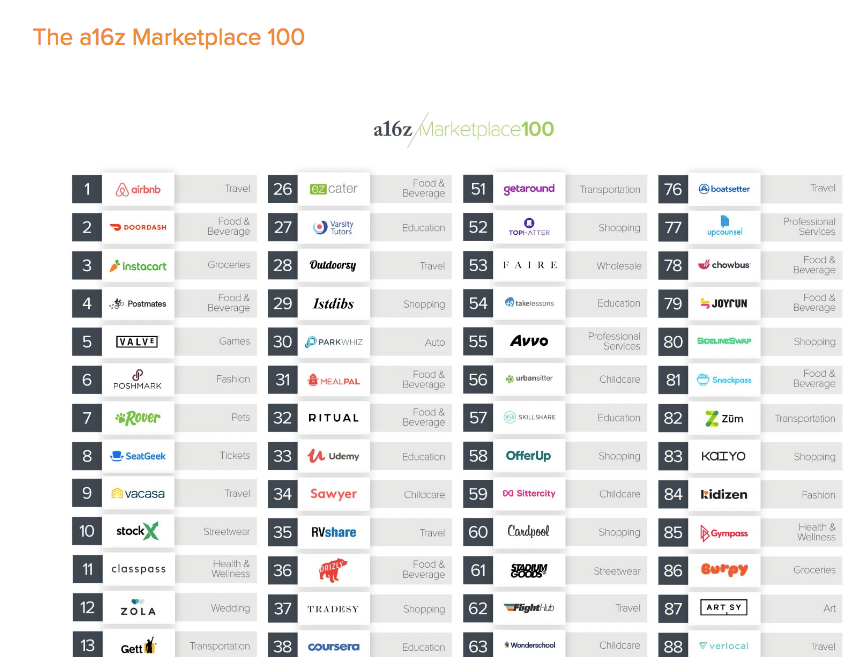

You'll be able to find patterns of topics they produce that may be of relevance to current happenings in your niche. Curate them in a way that follows a content idea.
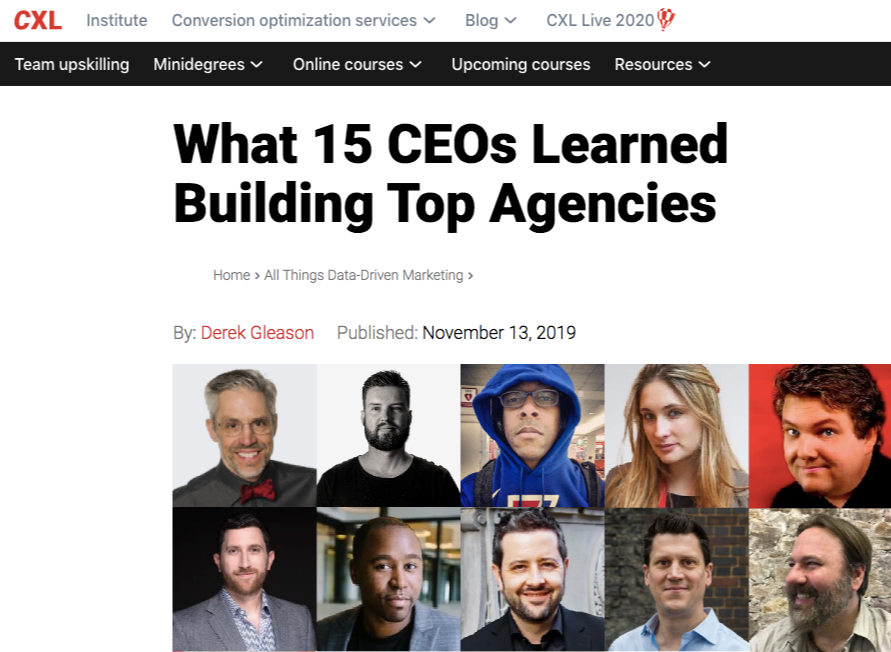

By excelling in content curation, you don't have to cram with both quantity and quality of content.
4. Consider other content formats.
A content creator isn't only fixated on writers. Content creators can be podcasters, videographers, and graphic artists too. They produce different types of content but aim for the same purpose for the brand or site they're involved in.
The key to gaining more awareness of your brand is to tap other content formats that best suit your audience. If you're a writer, try and invest in producing audio content like podcasts. For example, have your written tutorials be recorded on videos to provide additional learning material to your text-based piece.
Understand the learning styles of your audience. Go to places where they normally engage in. You can use Reddit to see what content format resonates more with your community.
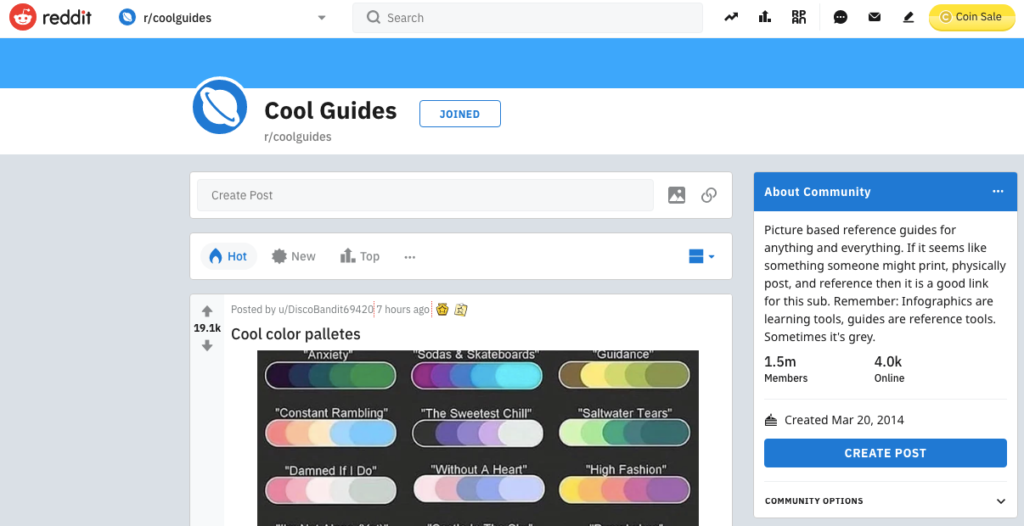
5. Invest in building your reputation and relationships
Regardless of whether you're working as an in-house or agency marketer or a freelance content producer, it is essential to build your reputation online.
The easiest way to build your authority is to participate in online community discussions, where you think you can provide people with your expertise.
Answer niche-relevant questions on the forum and on community sites like Quora. You can use Ahrefs to discover specific questions that are constantly receiving visits from people. Simply reverse engineer by plugging in Quora website and go to organic keywords
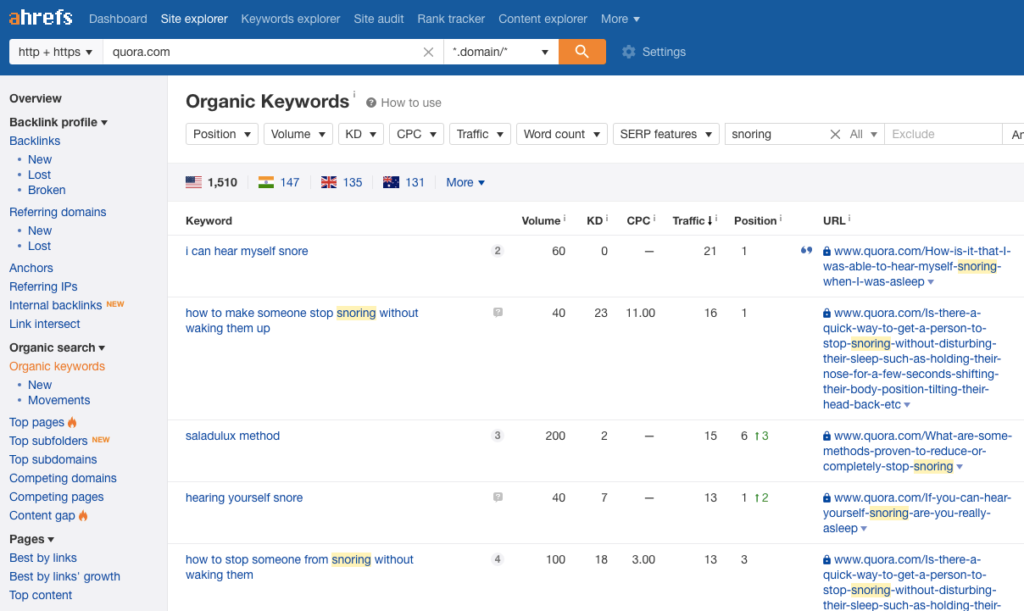

Start connecting with other content creators and thought leaders in your space. Build authentic relationships. You may never which one of them can help you further advance your career in the future.
Seek Continuous Improvement
Definitely, there are other more principles, ideas, and methodologies to become a successful content creator in today's time.
However, one that is foundational is to seek continuous improvement. It's a never-ending process to know what works in content creation and how to effectively distribute those assets to other places.
What is Evergreen Content and How It Works
What is evergreen content?
Evergreen content is content that never gets out of date and never relies on current trends.
Its effect is always relevant to its readers, making it more attractive for publishers to reference in their own content pieces of work.
Ever wonder why certain blogs get continuous traffic from different sources even after months and years of publishing?
These blogs are focused on creating evergreen content.
Table of Contents
Why Is Evergreen Content Important?
There are many benefits pushing out evergreen content on a massive scale can provide for your brand, such as:
A. Scalable link acquisition
Content on a trending subject can receive massive spike in link performance, especially if it's timely and emotionally-appealing.
Meanwhile, evergreen content allows a continuous flow of links directly pointing to your content. It's not a one-time off burst of links, but you can expect if monthly acquisition of editorial links to your web asset.
B. Hitting conversion goals
You may only consider creating content assets for links, but it will drive subscribers, social followers, and brand advocates down the road. As long as the content draws traffic, the growth in numbers can be met.
C. Social sharing
More than ever, continuous social sharing can help strengthen the brand in its core. The more visible the content is to its audiences, the longer it stays in their mind - creating a strong brand in the market.
D. Doors of networks, partnerships, and brand coverage
The aftermath of producing evergreen content is that it opens opportunities for partnership for content, and product engagement. It stems from the idea that your content assets have provided value.
Evergreen content serves as entry points to growth of networks — even media coverage from A-list content creators.
E. Increase in organic visibility
Given the comprehensiveness and high utility of evergreen content which normally covers every topic of a subject, the online asset gets its deserved visibility on search.
When evergreen content ranks for its target keywords, it creates another opportunity for it to be discovered, besides direct, social and referral traffic.
F. Supports other important pages
Evergreen pages with constant traffic can support other important pages through internal linking. By pointing to relevant pages that need some boosting visibility, evergreen content can be a reinforcing system for support pages.
Evergreen Content Creation Process
ON DISCOVERING EVERGREEN TOPICS
Find evergreen topics that get consistent traffic and have the potential to earn links over time.
You can start this content ideation process by entering a few topics for your blog in Ahrefs Keyword Explorer.
The tool is handy in giving you the parent topics of keyphrases — which is suggested by the tool (see an example below).
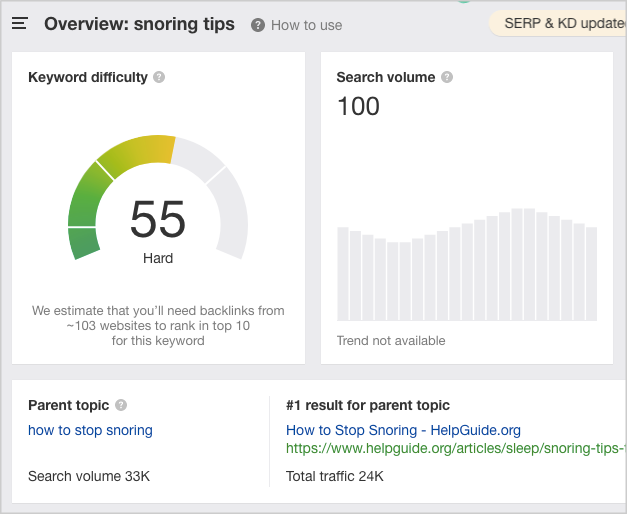

Parent topics are general topics that cover relevant subtopics underneath it. By pursuing parent topics for your evergreen content, you can target interconnected topics all under one big content piece.
Identify parent and sub-topics that are constantly being searched and that appeal to your market by looking at its search traffic.
Look down further. See the top ranking pages and their estimated traffic. This would help you understand if it's worthwhile to rank for that keyphrase.
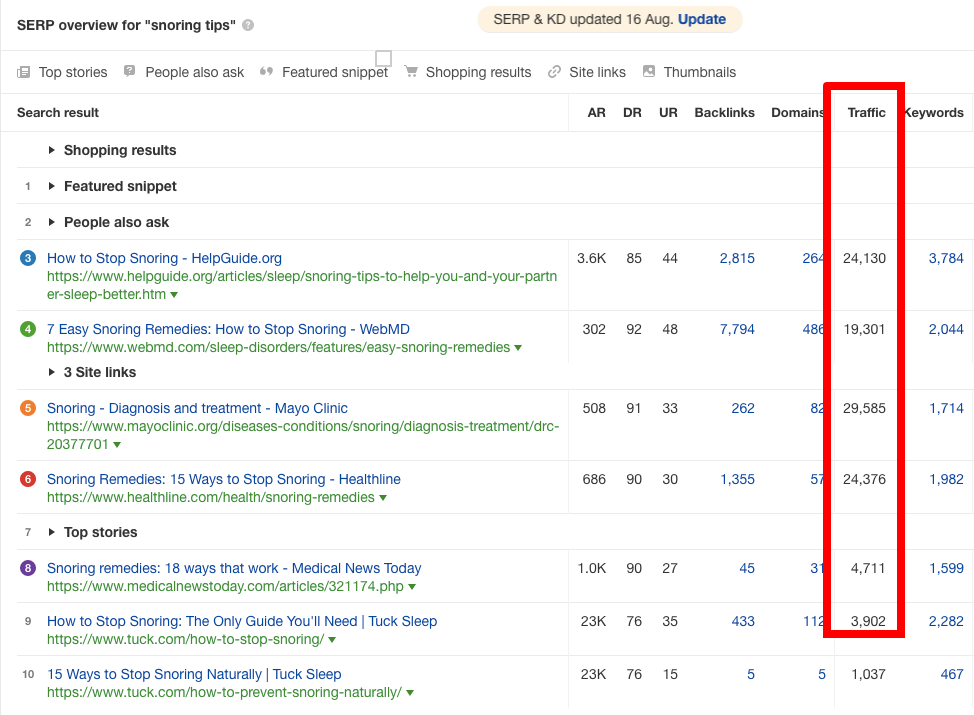

You can also check the trend graphs of keywords to see its popularity over time. Here is an example of the trend graph for the keyphrase, "how to stop snoring".
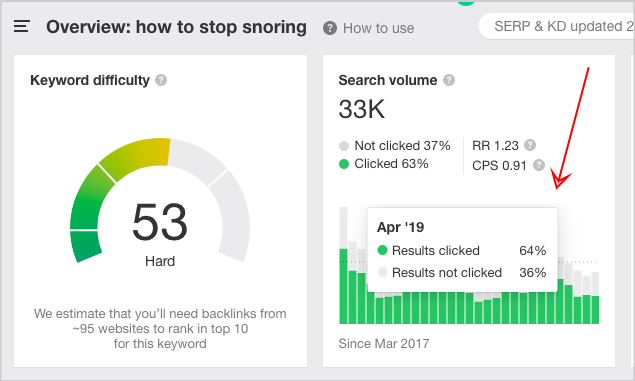

The trend graph will show how popular a keyword is for a certain period of time.
FURTHER READING
- 24 Untapped Ways to Get Blog Post Ideas
- 10x Content Ideation Process
- How to Generate Linkable Asset Ideas
ON ASSESSING LINKABILITY OF TOPICS
Besides just looking at search traffic and trend graph of a topic, you want to make sure that the topic also has linking potential.
The question you need to ask is, "Is this topic linkable?".
The way to answer that is to look at the top ranking pages for that keyword or keyphrase. See if these pages have at least 10 or 20 referring domains pointing to them. This kind of assessment gives you an idea if the topic of your choice has high linking potential.
Moz Toolbar is a nifty tool to quickly check how many referring domains are linking to each of the page on the search results.
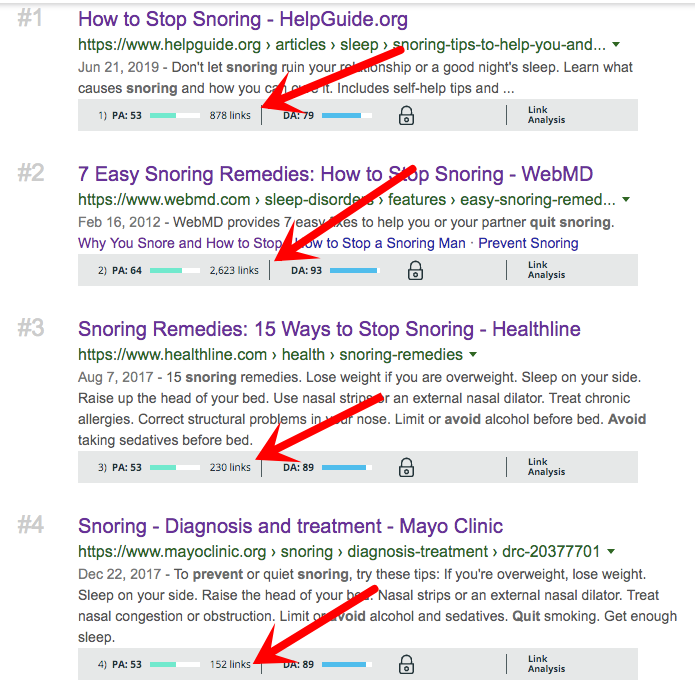

Why do you have to check the linkability of the evergreen topic?
The simple answer is that the linkability of topic correlates with how frequent the topic is being cited by other publishers.
The frequency now gives its room for more linking opportunities month after month and year after year.
ON CREATING EVERGREEN CONTENT
The mindset of publishing evergreen content differs from others creators' publishing 500-word blog post.
The piece should stay relevant weeks, months, and years after publishing (which will require maintaining it from time to time - that's for a later topic).
But the point here is that before you create an evergreen content, decide that you'll put hours of work into it in order to make it valuable and comprehensive to its audience.
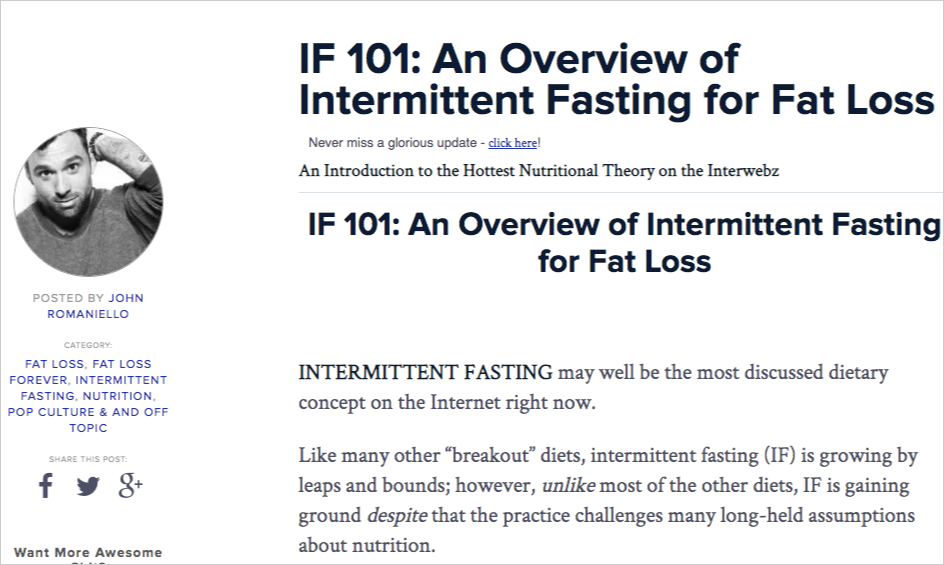

There are many characteristics a solid content piece (or 10x content as marketers call it) should have, a few that are a must include the following:
Expert-driven
Do you have an expertise on the topic?
If it's something you can't write on your own, you may outsource link building to someone expert in the field. Niche experts tend to charge higher than generic writers, but they craft content with the use of technical terms (jargons), authority, and credibility on the subject matter.
Uniqueness
Every blog is pushing out their versions of content for the topic, so what separates yours from their works?
Uniqueness doesn't just refer to variations of words, but the ability to present ideas in different formats.
Implement other content formats in your content to make it the most comprehensive piece on the topic. A useful advice for this method is to present content in videos, data visualizations, rich media or slide presentations.
The purpose is not to make the page longer than the usual, but for better presentation purposes, and to attract more visibility from people who are likely to share it on other web places.
Inclusion of Thematic Keywords
Whether you target parent topic or a sub-topic for your evergreen content, you want to make sure that the page will be found by people who specifically searching for it.
The key to make it work is to optimize content for other thematically relevant keywords — several possible search terms people used when researching for information.
You can use Ahrefs' Keyword Explorer to discover these keywords that are connected to your topic. The tool can also generate questions keywords that will be valuable to add to your content — of which you can answer to make the content reach more audience.
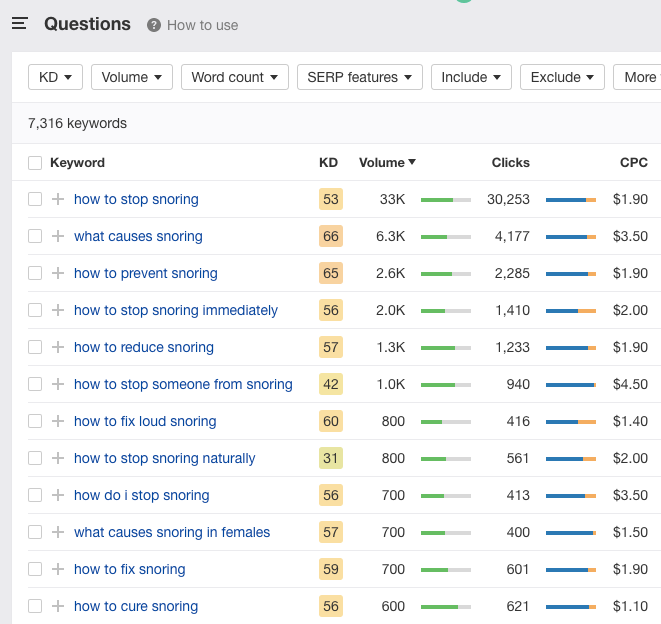

Keep these characteristics in mind when creating an evergreen content: expertise, uniqueness and inclusion of thematic keywords.
FURTHER READING
- Creating and Developing Content Assets Like A Pro
- Content Production For Links
- 75 Content Marketing Examples
ON PROMOTING EVERGREEN CONTENT
Whatever your goal is for your blog's evergreen content, your page reach will highly depend on the level of promotional efforts that you put in.
Start by looking for ways on how to do content-based link building that can drive referral traffic to your evergreen page.
Find any pages linking to similar content assets. Utilize the value proposition of your evergreen content in your email pitches. Answer the question, "why do your link prospects have to bother with your content asset?"
Build more links through your site's distributed content (contextually linking to them through your guest blogs). This will enable your evergreen page to get higher search rankings.
You can also maximize your brand's social media channels to push further the audience reach of your content piece. Make your social sharing buttons visible to your visitors — placing it on the noticeable parts of your page.
ON MAINTAINING EVERGREEN CONTENT
It is important to update your content piece to satisfy new visitors as soon as they land on the page. This will also increase the chances that it'll be shared to other target audiences — bringing in more people who will likely link to it as references for their content works.
What are the things you need to update in your content?
References and citations
You may have likely included information and even links to articles and new stories the first time you publish your content. These information and sources may no longer be relevant and useful at the time you decide to update.
It's important to have a list of citations/references whenever you create content so you can easily go back to websites and blogs where you found them, and see if they have updated information on the topic.
For example, statistics normally get updated every year, and it's easy to find their latest up-to-date version of the data if you have the website URL at hand.
Internal linking
Improve your content's visibility factor by internally linking to other relevant pages on the subject, particularly the ones you've recently published on your blog — relevant to your evergreen content.
Use descriptive anchor texts in your internal links to drive visitors from other pages to your evergreen content.
Years and dates
Update years, months or any dates you include in your post's titles and in the body of your content.
Use current year to increase the relevance of your post — leading to higher rankings and to higher search visibility for the page's targeted keywords.
Final Thoughts
If you are looking for ways to scale your content marketing, invest in producing evergreen content assets. With the right execution process — from researching topics to promoting and maintaining the content piece, you can gain a constant flow of traffic and potential sales to your website.
Let me know in the comments how you develop and promote your evergreen content.
5 Step Process to Find Highly Linkable Topics and Rankable Pages
In this episode, I’ll walk you through a process that can help you discover topical keywords that help you earn backlinks.
Let’s face it when ranking for keywords, it’s more of targeting the right keywords. And once you rank, you gain more traffic from your rankings.
But what I’d be discussing with you is hitting two birds with one stone.
Find keywords that you’re capable of ranking.
Find keywords that you’re capable of earning links through rankings.
Let’s get started.
So how do you find linkable rankable topics?
It’s good if you will be reading the article version of this podcast, as you can see the exact screenshots of the steps.
Table of Contents
How To Find Highly Linkable Topics and Rankable Pages
The first step in finding the linkable rankable topics is:
Step 1: Find pages currently ranking for keywords
Discover pages of your website or other websites to find pages sitting on pages 5 to 20. These are your webpages or other people’s webpage that are on pages 1 and 2 in Google.
You can use backlink analysis tools like Ahrefs to plug in your website or one of your competitors’ websites.


Then go to Top Pages feature of Ahrefs, there you’ll see all of the top pages of the website.
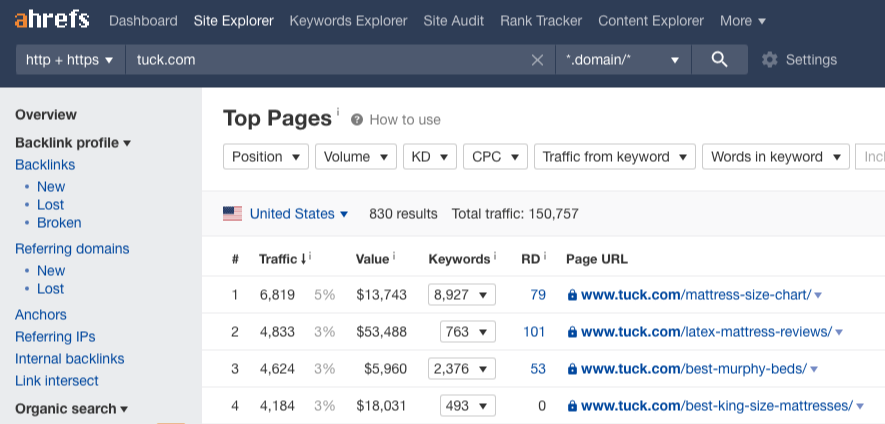

Next is you filter pages by ranking position. So put position 5 to 15 in the filter search of Position. The tool would reveal to you pages currently ranking for positions 5 to 15.
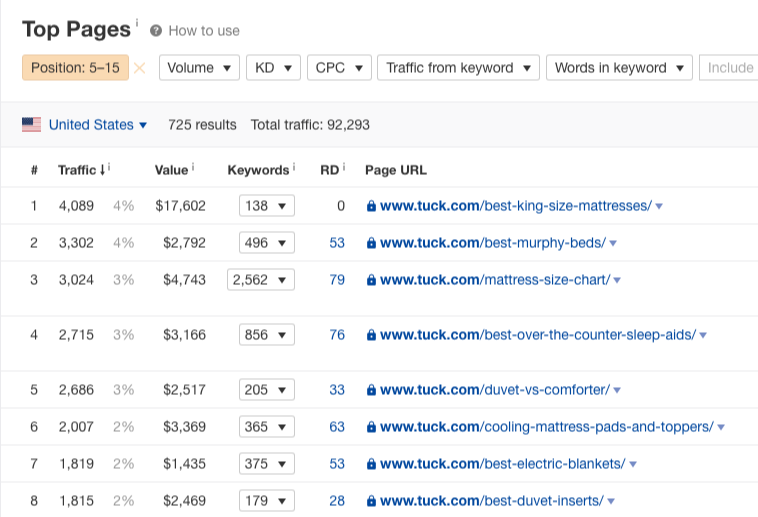

Export this list into csv.
You can import this csv file into Google Sheet.
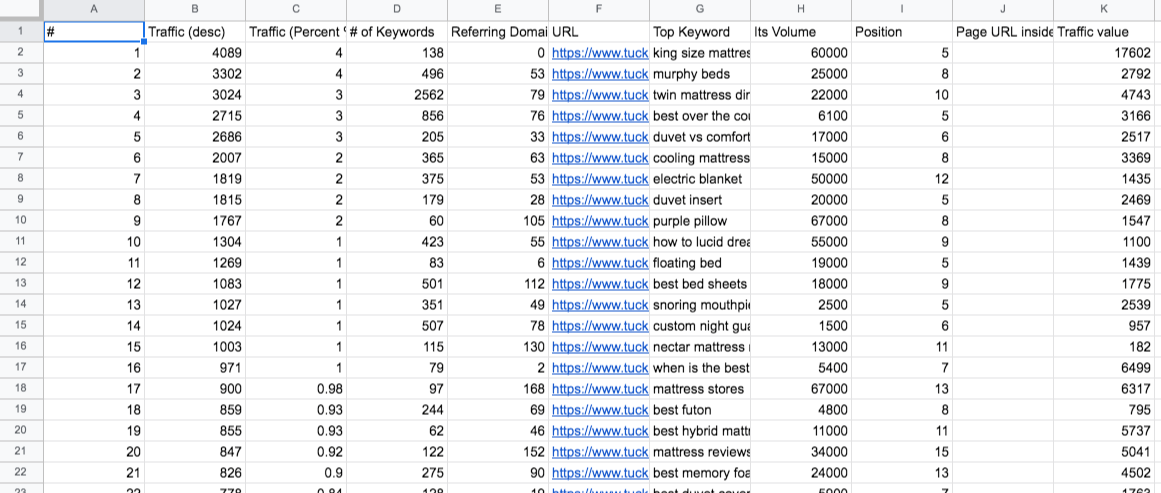

The next thing you want to do is:
Step 2: Discover keywords with good search volume (from ranking pages)
How do you do that?
Filter the list you have on your Google Sheet for 0 referring domains and search volume of over 50 plus.
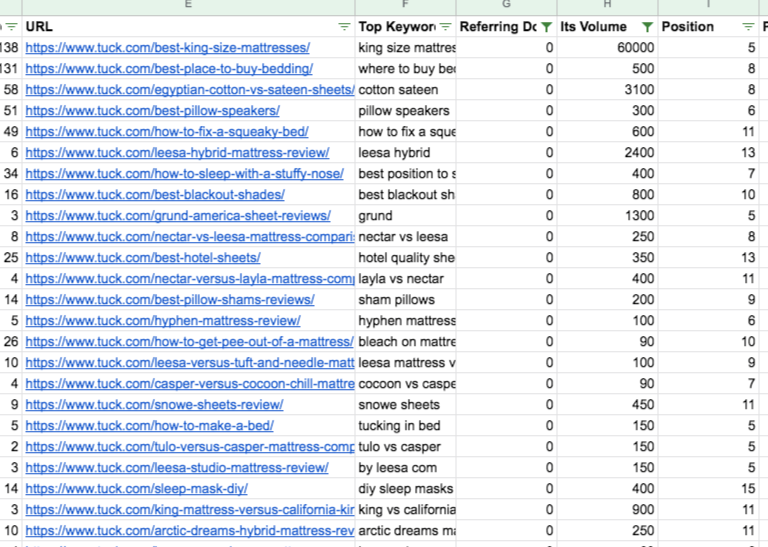

By doing this, you’ll get to see keywords with good search volume.
But you don’t stop there.
You want to find keywords you know you can rank for.
Step 3: Choose rankable keywords
So you can use Keyword Difficulty as your determining factor here.
Sort keywords from lowest to highest KD or Keyword Difficulty.
You may also want to check the search results for each keyword and see if you can really rank for the keyword.
The way to do that is to check the Domain Authority of websites currently ranking. Are they higher or lower than the DR of your website?
Another way is to check the referring domains pointing to websites above you. Do they have more or fewer referring domains than you?
The next step of the process is to:
Step 4: Spot content opportunities from ranking pages
Find opportunities for content type and page topics.
You want to see if the pages above you have the same type of content as your page. Does your page match with pages ranking above you?
The way to do that is simply to check the ranking page above you, identify their content type.
Want you to want here is to spot similarities and opportunities when you can create a better version of that content type.
And lastly is to:
Step 5: Choose linkable and rankable topics to go first
Given that you have chosen and filtered keywords where your pages or pages from other websites are currently ranking for.
And you have trimmed down to keywords that are linkable as there are referring domains pointing to pages above you. As well as these keywords are rankable based on your site’s rankability - you now have a solid list of keywords.
It’s time for you to decide which one keyword to attack.
So there you go, you discovered this 5 step process to find highly linkable and rankable topics.
Before you go, I have a special gift for you. if you’re looking for ways to build backlinks to your online store or you’re stuck as to what link building strategy to use for your website, simply go to the description of this podcast episode.
Go to either of the two resources I shared there. One resource is a blueprint that I and my team have used to scale ink building for clients and another resource for link building opportunities in the eCommerce space. Go and grab those resources so that you won’t have to worry about how to do link building for your website.
For more link building and content marketing tips, be sure to subscribe to this podcast to get notified of the latest episodes. Just click the “Follow” button. See you in our next episode.
How to Find Great Blog Topics to Write About
Content is king. But only if you know what type of content and what blog topics to write about.
Finding content ideas is one of the challenges of a content creator. Before we dive into how to find great blog topics. Let’s discover what to consider when finding blog topics.
So that you don’t just create content for the sake of creating. But you’re creating content that matters to your audience.
Table of Contents
What are some considerations when finding blog topics?
Your Audience
Who is your audience? You have to be clear about who are you creating content for? Who do you serve?
The more you specific it, the easier it would be for you finding a blog topic.
One way to do this is by developing your audience persona.
Audience persona is a fictional representation of your audience. Either you draw a person or simply just state what does this person looks like.
The more specific your audience, the better off it would be in content creation. Where does this persona work? Does he or she have kids? How old is she? Where does he or she live? What challenges might he or she have in life or in business?


Besides audience targeting, the next thing you want to consider is traffic potential.
Traffic Potential
When finding blog topics, you have to ask this question: is there enough traffic for this topic?
The reason you want to ask this is to know if there are people who are interested to learn about the topic. Because chances are you may be creating content for a topic that no one cares about.
Thirdly, you want to consider is ranking difficulty.
Ranking Difficulty
“Can I rank for this topic?”
By rankings, to be particular is search rankings.
Because if the blog topic you choose has enough search traffic, and you can compete with pages that are specifically ranking for a keyword, you can gain more visibility from rankings itself.
Now that we’ve discussed audience targeting, traffic potential, and ranking difficulty, let’s proceed to how you can find great blog topics to write about.
How to Find Great Blog Topics to Write About
First on the list is:
Use tools to discover keywords with search traffic.
The easiest way to find great blog topics is to use tools. And not just using tools, but tools that can help you discover what topics people are searching for.
Ahrefs' Keyword Explorer
First, is you can use Ahrefs. It has its feature: Keyword Explorer, which can help you find keywords people are searching for in your industry.
So you simply go to Keyword Explorer, type in any keyword or topic related to your space, then it will show you keywords related either containing the exact phrase you search for and have similar phrases to that.
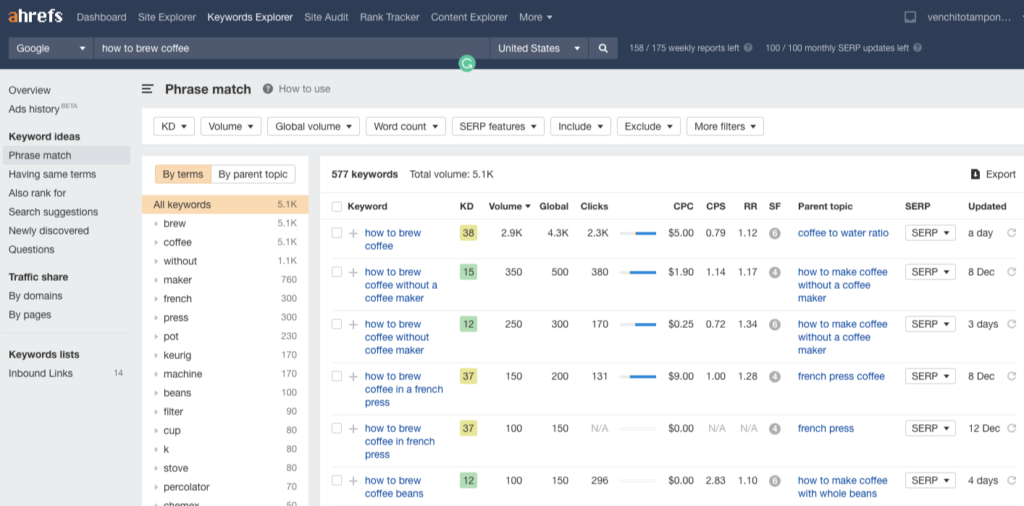

Once you have a list of keywords, what you want to see is their traffic potential. Search volume is what you have to consider here. The higher search volume for the keyword, the more people are searching for it -- which means a great blog topic to choose from.
Next thing is you want to know is if you can rank for the keyword, which we talked about earlier: ranking potential.
Ahrefs’ Keyword Explorer gives you “keyword difficulty” which tells how difficult to rank for a keyword. It considers how strong and authoritative competing pages for that keyword. The lower the keyword difficulty, the easier it is for you to rank, and therefore, a great blog topic to consider.
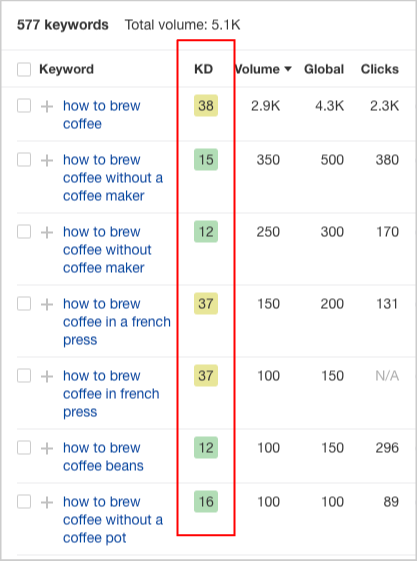

If you want to go deeper to ranking difficulty, you could also check how many links are pointing to each page ranking for the keyword.
Because the more links are pointing to each of the ranking pages, the more difficult it is to rank for the keyword. Of course, it’s not quantity of links, but also the quality of links. If the pages are getting links from trusted websites, the more difficult it is to rank for the keyword.
Exploding Topics
Aside from Ahrefs, another tool that you can use is Exploding Topics.
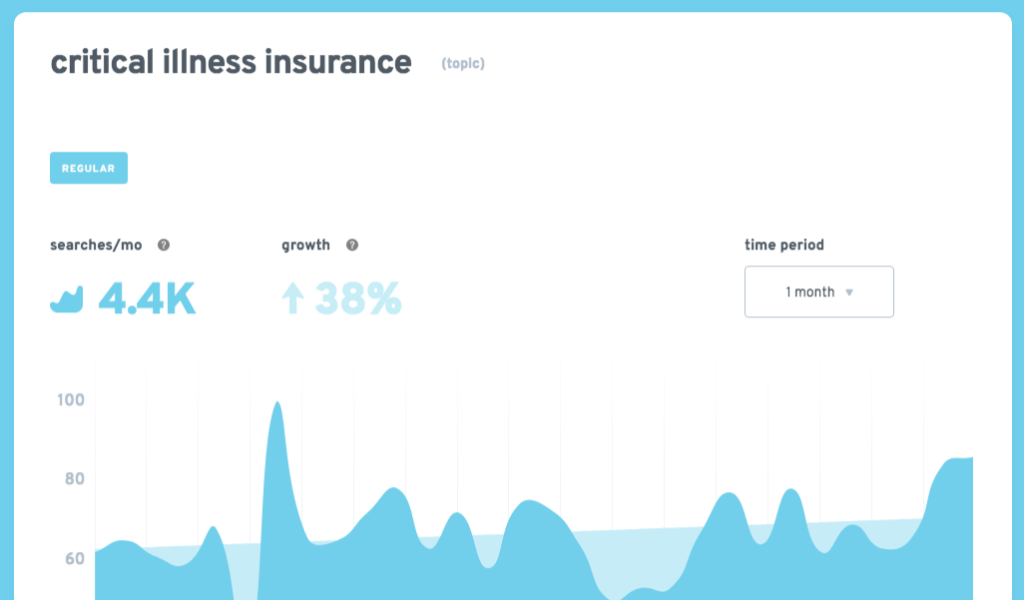


Created by Brian Dean of Backlinko, Exploding topics can help you discover the hottest new trends in different industries.
Just go over to Exploding Topics. Choose the category that fits you and the time period to see how trending the topic is for 1 month or 3 years, let’s say.
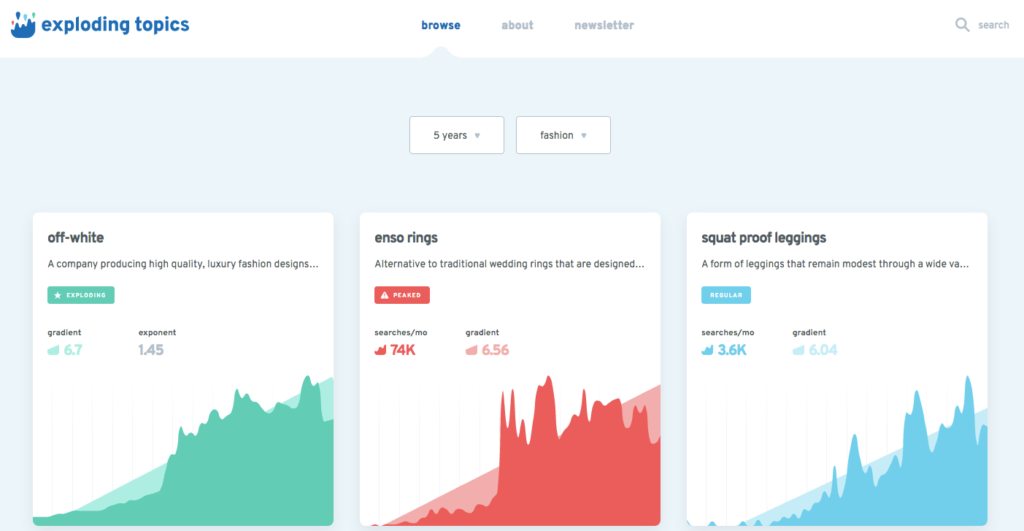

Another tip for you to find great blog topics to write about is to listen to your audience.
Listen to your audience
And by listening to your audience, it means that you go where they hang out online.
You listen to what they say, to what they voice out, to what questions they ask and what topics they care about.
One website you can go to frequently is Reddit.
So in Reddit, there are subreddits for different markets.
You search for the topic of your choice, then it would give its suggested subreddits.
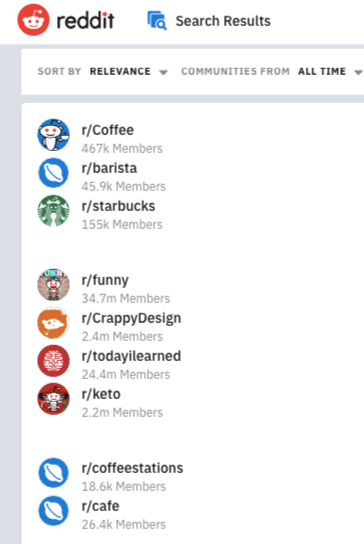

You visit each subreddit and see from time to time what questions people ask in the platform. By simply reading the questions and comments, you’ll have ideas of topics they truly care about.
So instead of just creating content and wondering if there would be people who would promote, why not start by listening to your audience and creating content to serve what they really need.
And last strategy is find great blog topics is to model topic templates.
Model Topic Templates
There are specific topics and titles of content that are common to every industry, because it speaks of needs and wants of audiences.
I call this as “topic templates”.
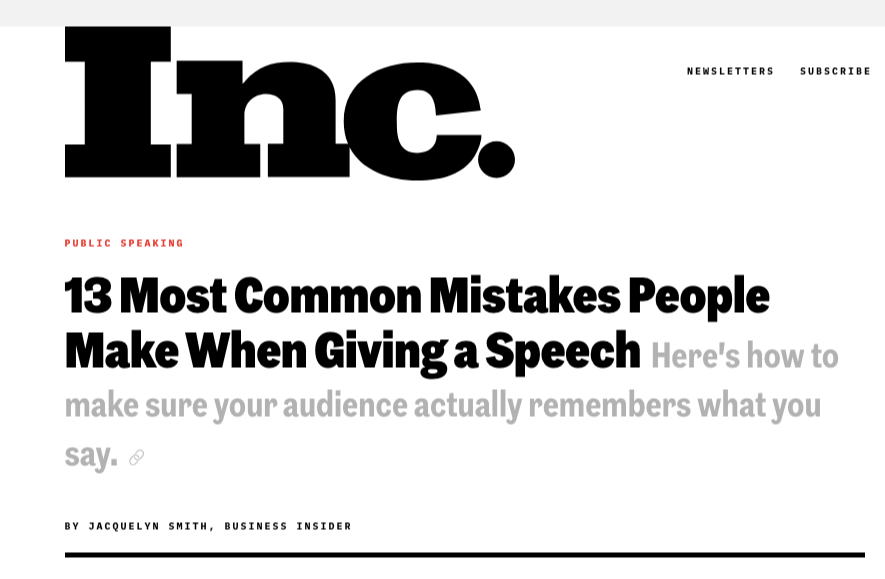

Here are some topic templates:
- 10 Common Mistakes [Audience] Make When [Action]...
- Top 3 Secrets to [Result 1]
- How to be a Highly [Result 1] Person
- 5 [Industry] Predictions in [Year]
So there are just a few examples of topic templates you can leverage for your blog. So go ahead and use any of these titles as ideas for your future content.
Let me know in the comments section what your biggest takeaway. As always, be sure to subscribe to our newsletter for more content marketing and link building tips.
Source to Content Creation Strategy
This is where you get publishers to link to you without begging. Instead of you reaching out to people who might link to your page, you might as well want to let them come to you and give you links, without you even noticing that you even got those backlinks.
[podcast_subscribe id="26132"]
How can you do apply this link building strategy?
First is to find source-to-cite- queries. These are keywords, words, phrases that people are searching for when they are looking for more references to consider when they’re creating their content. It’s like when they are in their research phrase for their content. So normally they would go on Google and type in reference-like keywords.


So you want your content to be on the top spots when they search for their keywords. Because chances are your content will be picked as one of their references (giving you links from their content).
So those keywords are statistics, templates, letters & proposals. For example in the career space, bloggers who are writing about job hunting might go to Google and search for resume templates. So you as a content creator, you want to rank for those keywords, because other content creators might use your resume template page in their content (with links to it).
You wanna make sure to check those keywords if there are linking opportunities. To do that, you use Mozbar which helps you quickly check on the search results the number of referring links to the pages ranking for the query.
The reason why you have to do this is that you want to make sure there is a linking potential in that keyword that you’re targeting.
The next thing you want to do is to create content targeting the source-to-cite query, whether that is a statistic, template, or proposal.
You may want to check these websites to gather some public data information. Websites like data.gov, data.worldbank.org, reddit.com/r/datasets, and statista.com
After you build the content, you also want to promote it to gain backlinks. So that it can rank for the keyword you’re targeting.
So how do you apply a source-to-cite link building strategy?
Find keywords content creators are searching for when they are researching for additional references for their content. Then check using Mozbar to see if there are linking opportunities for that keyword. Then create content around that topic. It could be a template, statistic, or proposal.
How to Create Resource Content Guides For Linkable Audiences
Have you ever wondered why marketers are too confident with their content? The reason is that they know exactly that what they've created has the potential to earn links once they promote it.
[podcast_subscribe id="26132"]
This is how you can guarantee links even before creating the content.
Linkable audience is a term coined by Garret French, founder of Citation Labs, who is also a good friend of mine.
He says, that linkable audiences are audiences who belong to communities with high-level academic, medical, and government interest.
And so these audiences are more receptive to giving you backlinks, given they want more resources, data, and references for their content.
Now, what you want to do is look for these linkable audiences first before creating content. Because you will create content to match and target a specific linkable audience. Given you know these audiences can link to you, you can guarantee links even before you create the content.
Here are some linkable audiences. We have teachers, caregivers, parents, senior citizens, veterans, health conditions sufferers, job seekers, unemployed, workers in the non-profit sector, immigrants, people with disabilities, local community, students, families of substance abusers…
So step one in using this link building strategy is to create a resource guide based on your chosen linkable audience.
So let's say your brand can target parents. So wanna make sure you don't get go too far from your target customers. Check your target customers and see if any linkable audiences ring a bell to you.
So if you're selling mattresses, and beds, you can create a guide to target parents. So you can have The Ultimate Parent's Guide to Sleep For Kids. Another example is to target people with PTSD (post-traumatic stress disorder), and create a guide just for them. PTSD and Sleep Problems guide for example. So now each guide you create is targeted to a specific audience.
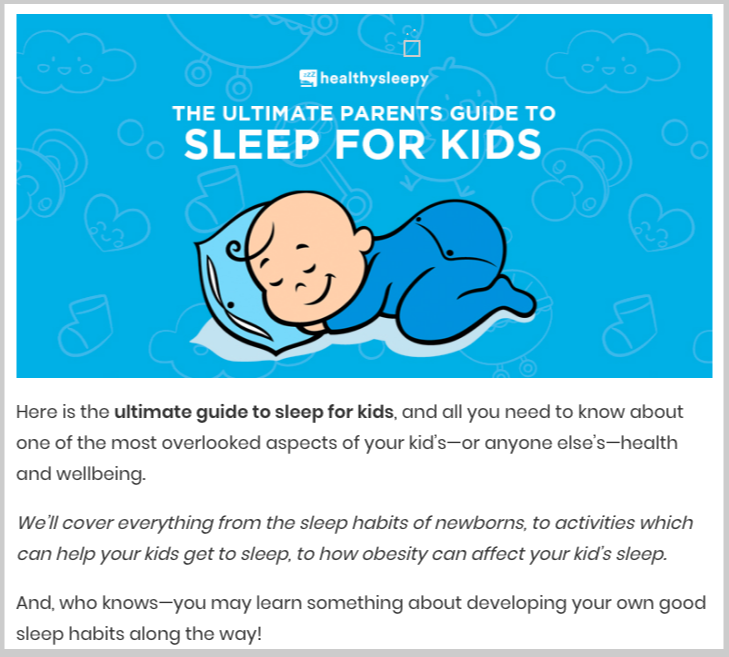

The next thing you want to do is to get a list of resource pages within your target audience. So if you're targeting people with PTSD, you wanna look for resource guides that have a list of references about curing PTSD or helping people with such disorder.
You can use a resource page prospecting spreadsheet which we include our Broken Link Building blueprint.
You can also check similar content for more link opportunities. These are content that your competitors might have or other websites published that talks about the same topic, in our given example, these are pages that talk about PTSD. To find all of the pages that link to these similar content, and add them as your backlink prospects in your link prospecting spreadsheet.
Make sure your spreadsheet is well-organized. So you can include columns for each detail about your backlink prospect.
Next, you wanna do is to find broken links using LinkMiner. The reason you want to look for broken links on a resource page that you just prospected is that the broken links are your value proposition in your outreach.
So when you send an outreach email, you say that you've found a broken link in their resource page. And you want to fix it by suggesting a replacement, which is your content.
So that is the link building strategy using resource guides for linkable audiences. You choose a linkable audience, create a content piece around it, find resource pages that talk about your audience, reach out to owners of these resource pages and let them know of any broken links they have, offer your content as replacements, and boom, you get the link!
How to Create Consistent Content For Your Business
Content marketing is not that easy. It takes efforts, processes, and resources to create consistent content for your business.
Whether you think you don't have the time to market your business with content, or you think you can't follow through with your content calendar, or as simple as you don't know where to start, there is a way to get through this.


In this post, we cover the four steps to help you create consistent content for your business.
Table of Contents
How to Create Consistent Content For Your Business
1. Systematize Your Content Creation Process
What gives you consistent results is a process that provides consistent output.
Like following any system (e.g. ordering a food), you would expect an outcome based on your inputs. The better your resources (inputs) and the smoother flow going through from step one to step two until it reaches its desired destination (last step), the higher the quality output you can expect from it.
Different businesses have different methods of creating content based on resources, industry context and expertise, brand guidelines, and other pertinent factors to content creation.
Regardless, there are two overlooked initiatives before actual content creation: analyzing and strategizing content assets.
Oftentimes marketers jump off to content creation without performing a content audit and taking any derived analysis to validate relevant content.
Two Overlooked Initiatives Preceding Content Creation
Analysis Through Content Audit and Content Inventory
What content audit does is that it allows you to discover where your direct competitors are currently ranking so you can find target keywords and topics with traffic opportunities.
You can check out this guide on competitor analysis for content creation. With the help of Ahrefs, you can easily export data into CSV and have it organized in Google Sheets.
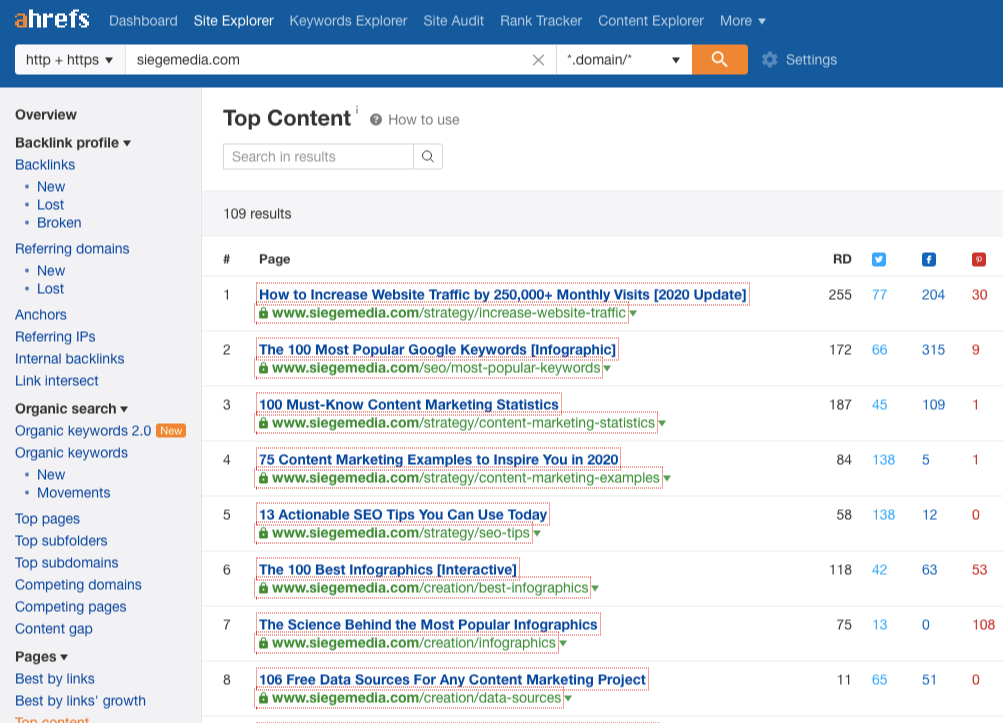

Besides competitor analysis, what you can also do is have a content inventory of your website.
Here is a good definition of content inventory.
“A content inventory is a complete listing of every page on your website, with associated meta information and metrics, which allows you to make both general and specific evaluations of your website content.”
I've covered a detailed guide on content inventory that shows five quick action plans to get started with the process.
Here is a quick summary of these action plans.
- Identify content archives worthy of updates
- Dig into pages for BLB promotion
- Generate ideas for future content pieces
- Build internal links from top linking pages
- Match old content to current search strings
Strategize Through Brainstorming and Topic Validation
After you have collected data to get insights for your content, your next step is to brainstorm which topics best suits your needs.
This is the activity wherein you validate the idea if it has the potential for traffic and links. By looking at the number of referring domains to the rankings pages for that topic (doing a Google search for it) and by seeing overlapping linkable audiences you can tap later on.
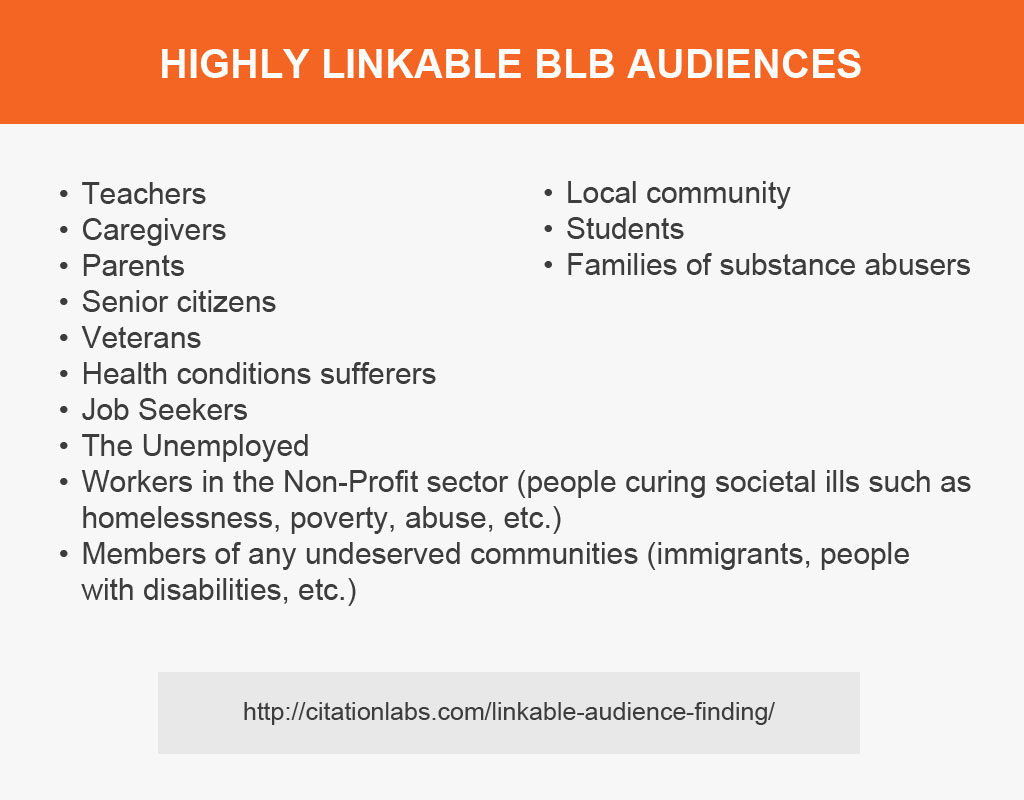

You may want to check this video by Peng Joon to help you with gaining more clarity with systems using Trello.
2. Schedule Content Onto Your Calendar
Procrastination is one of the biggest barriers to getting things done.
One way to break this barrier is by scheduling your activities.
What you only have to do is to follow your schedules and stick to it no matter what.
The same goes when you want to create consistent content for your business. If you want to beat procrastinating publishing content every week, you have to schedule content on your calendar.
By doing so, you design a specific day and time just for a content creation activity.
You can chop your content creation process the four parts:
- Ideation
- Drafting (Content Writing)
- Proofreading
- Designing
- Publishing
You can add more steps to the process that you think fits better to your own context as a content manager, content creator, entrepreneur, or agency owner.
You can schedule each of the activities above in a day and time (e.g. Ideation on Monday 9AM). By having a specific routine every week just for a task, you semi-automate the entire planning stage — as you don't have to think about what to do next once you're done with the first activity.
That's how powerful scheduling is.
3. Seek for Others' Deadlines To Get It Done Quickly
Accountability is a key factor to remain consistent in what you are doing. By allowing people to supervise you or lean on their own set of deadlines, you don't allow yourself to procrastinate activities.
When working with editors, proofreaders, graphic designers, or outsourcing writers, it's important to set deadlines for each activity or campaign.
By doing so, you begin with the end in mind.
Don't let any step overlooked or unexecuted properly.
4. Simplify Through Batching
Systems, scheduling, and seeking other people's help and deadlines help you create consistent and sustainable evergreen content for your business.
Another thing you want to do is simplifying it more through batching.
What is batching?
Batching is the act of grouping tasks together, so you do them all at once, instead of switching between tasks that take place in different programs or areas.
Instead of you switching your focus and trying to regain it when you get distracted, you batch group all similar tasks in a specific day and time.
Instead of you scheduling ideation of topics for 5 campaigns on different days of the week, you simply schedule all the ideation tasks on Monday (for example).
By doing so, you achieve what Cal Newport says as, "Deep Work" where you perform a state of distraction-free concentration that gives your efforts and skills a new level and value.
Result Takes Time
Don't expect immediate results when you systematize your process, schedule content on your calendar, seek for other people's help and deadline, and simplify things through batching.
However, when you do these things to create consistent content, you achieve progress and compounding results in your business.
Get to your vision straight.
Improve your habits through consistent efforts.
How to Generate Content Ideas in the New Normal
We content marketers and SEOs have to adjust to the way we plan out content for the next coming months.
As we become more flexible in other business functions, content marketing is something to be taken care of seriously to address the changing needs of online users.
The new and old problems brought by this pandemic challenge many of our existing content strategies — whether in a form of content ideation, content creation, link building, or content promotion.


In today's post, we'll cover on just one phase of content marketing — content ideation. Let's learn how to generate content ideas in the new normal.
Table of Contents
How to Generate Content ideas in the New Normal
1. Adjust Your Content's Keyword Strategy
There are keywords in your content calendar that can play out still in the new normal, but there are transitional keywords your searchers may be looking for that you'll have to create content about.
This means that you have to do some adjustments with your keyword strategy.
For example, you'll find that relying too much on prominent keyword data tools like SEMRush for transition keywords may not be effective to discover transitional keywords.
SEMRush may not cope up immediately in their data set key phrases that have had good search volume for the past 30 days.
You wouldn't get much value from it to find any coronavirus-related terms or any industry-related phrases that match that need of searchers in this season.
What you want to do is to use another tool - Google Trends, which can show you trending keywords for the past 30 days.
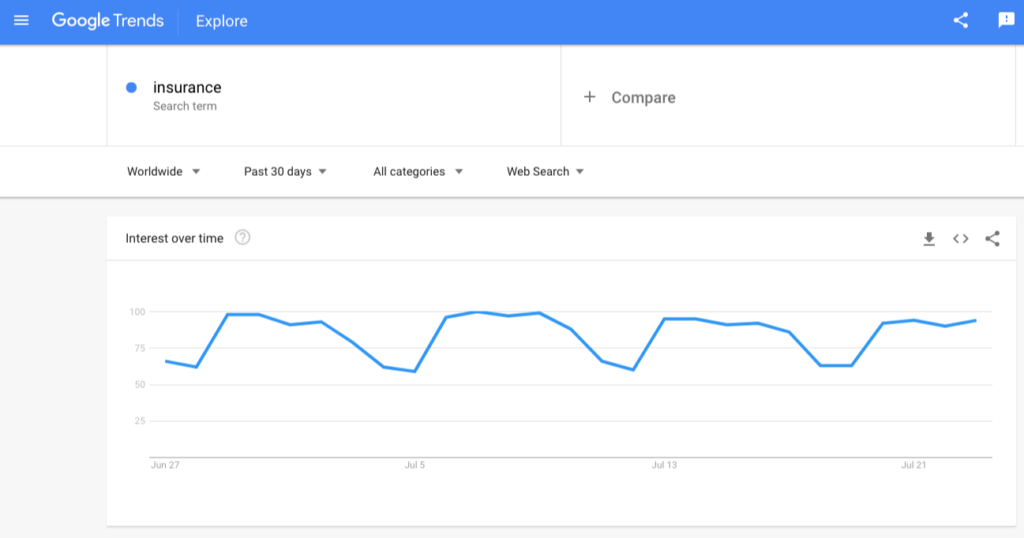

Go to the Related Queries section to find more related phrases for the keyword you are searching for.
Related Topics section will also give you an idea of content themes you can decide to generate content assets later on.
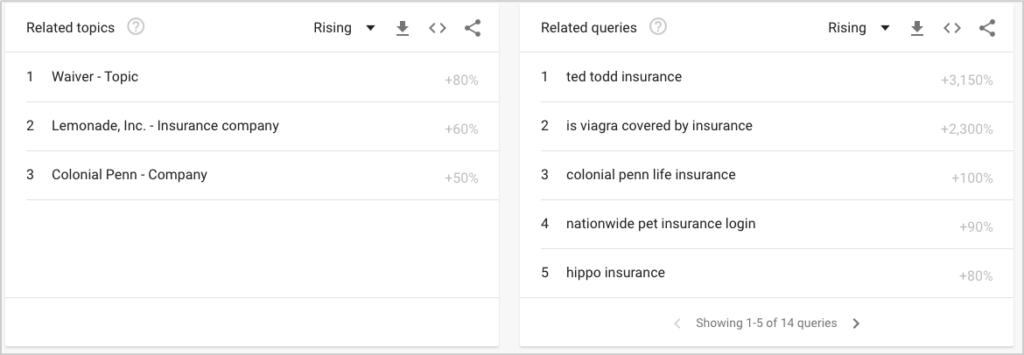

You may even consider the Coronavirus search trends available in Google Trends today. This gives you top questions asked for the past days and weeks.
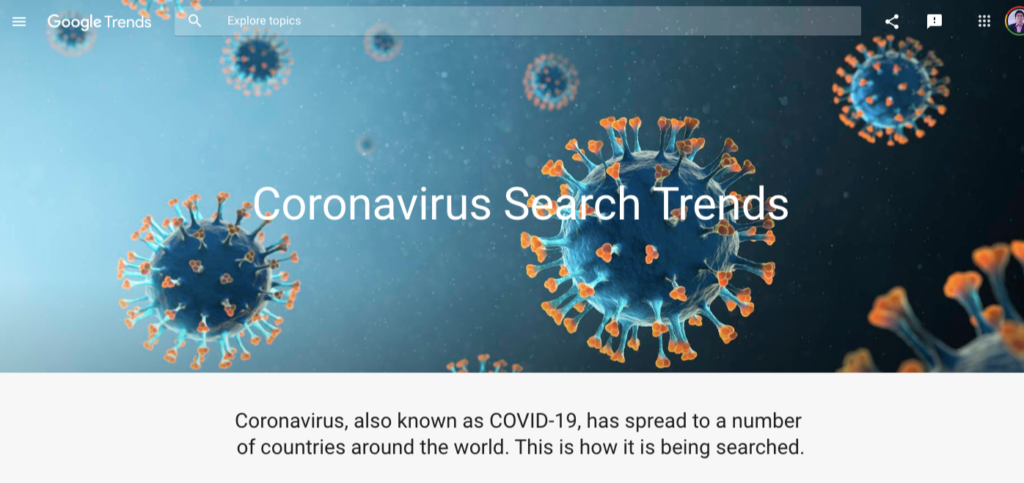

Once you have specific queries or keyphrases collected from Google Trends, you can use AlsoAsked to further find questions related to each key phrase.
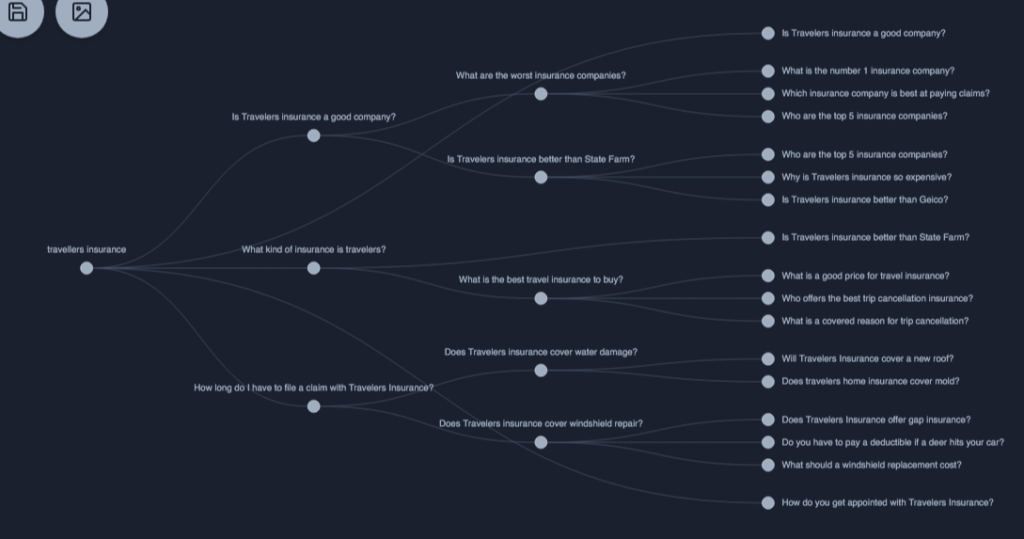

These questions can be your ideas to consider for your blog posts.
2. Use Maslow's Hierarchy of Safety Needs
Creating content is serving the needs of its target audience.
In today's time, human needs don't change that much. There are only levels of needs that have been more emphasized and more to be taken care of as people go through tough times this pandemic season.
In Maslow's Hierarchy of Needs, people care still at self-actualization as the top-level need.
However, in the new normal, we can see safety as the much-needed topic to consider when creating any transitional content.
Safety needs can be broken down into more specific areas such as financial, emotional, physical, and social.
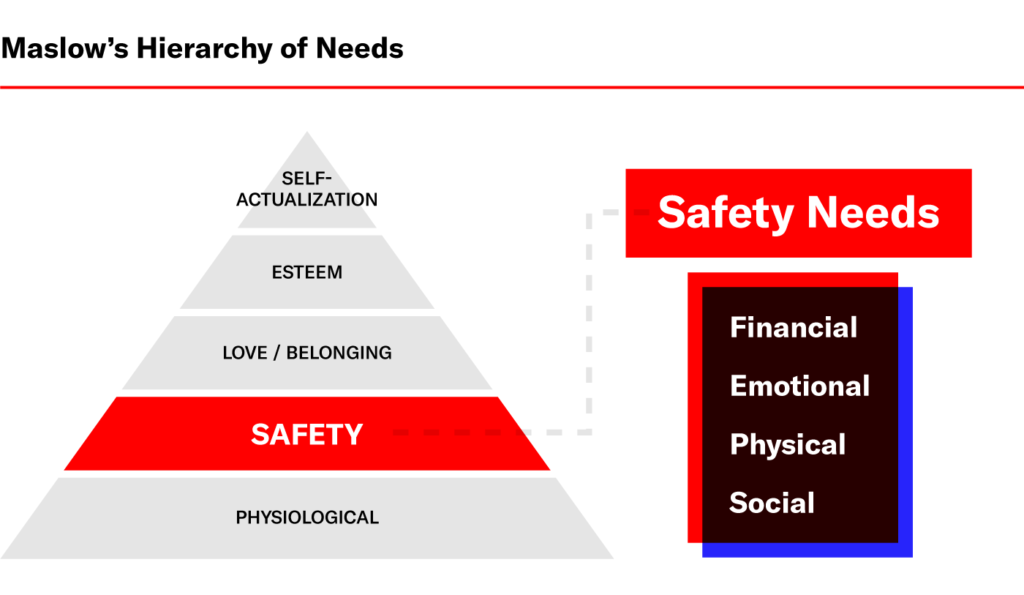

When generating content ideas for transition content, you can tie your already mapped out topics in your content calendar to any of the specific safety needs.
For physical safety, this means you'll look at any topic that may be related to staying clean and avoiding germs.
For financial safety, it could be helping people who've just been laid off from work and business owners who've been heavily affected by the crisis. Look for topics that help solve current money problems of people.
For emotional safety, content that revolves around managing stress, fear, anger, and any negative feelings people experience during tough times.
For social safety, start with content that deals with people's interaction through online platforms. Any keywords with remote or virtual may play out to be timely topics.
Match any discovered safety topics to Exploding Topics to see how trending they are at current times.



You may want to set up Google Alerts to track any mentions of the specific safety areas. This could give you list of recently published pages that can help you generate some content insights.
You may want to check out these two guides on finding unique blog ideas and creating link assets in boring niches.
3. Discover Recent Highly Social Engaged Content
Besides trending topics, you also want to look at content themes that gain social engagement for the past days and weeks.
This could be done well using Buzzsumo. Discover any industry topics that received traction on social media platforms.
Create transition content based on topics not only with high search intent but also with high social engagement — as this could run through well in getting traffic spikes for your blog.
If you are blogging for personal branding, using Buzzsumo to find socially engaged content gives you discovery on the latest authors and personalities who are active in pushing out content in this new normal.
Another tool that you can use to search for socially-engaged content is Reddit. We've written some guides here at SharpRocket to help you get started with Reddit.
4. Replicate Content Ideation Strategy from Content Hubs
Resource hubs have been dedicated to particular content themes and to specific audience needs.
In the new normal, you can consider creating your own hub of helpful resources for COVID-19.
You can add your latest solid content assets for COVID-19, which includes blog articles on safety concerns.
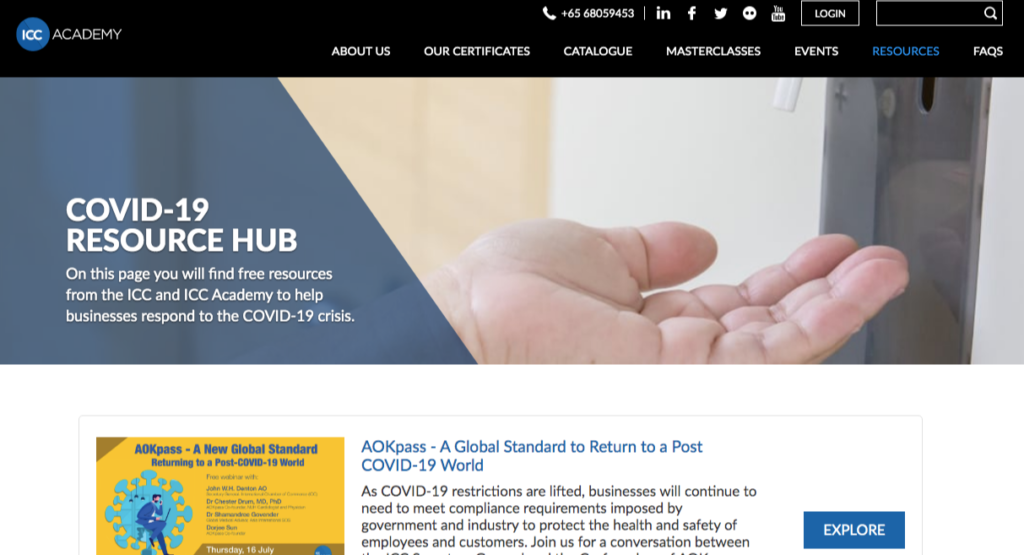

Even if it's just a curated list of existing content, as long as it is a good match for COVID-19, create a hub for them.
Be Flexible With Your Content Strategy
You may have a well-planned out strategy for this year, but what separates successful content marketers from a mediocre one is the ability to foresee changes needed to implement right away to better serve its intended audience.
Your mission as a brand is still the same, but the strategy must be flexible to address the needs of your users.
Let me know in the comment section any tips you may recommend to generate more content ideas in this new normal.
